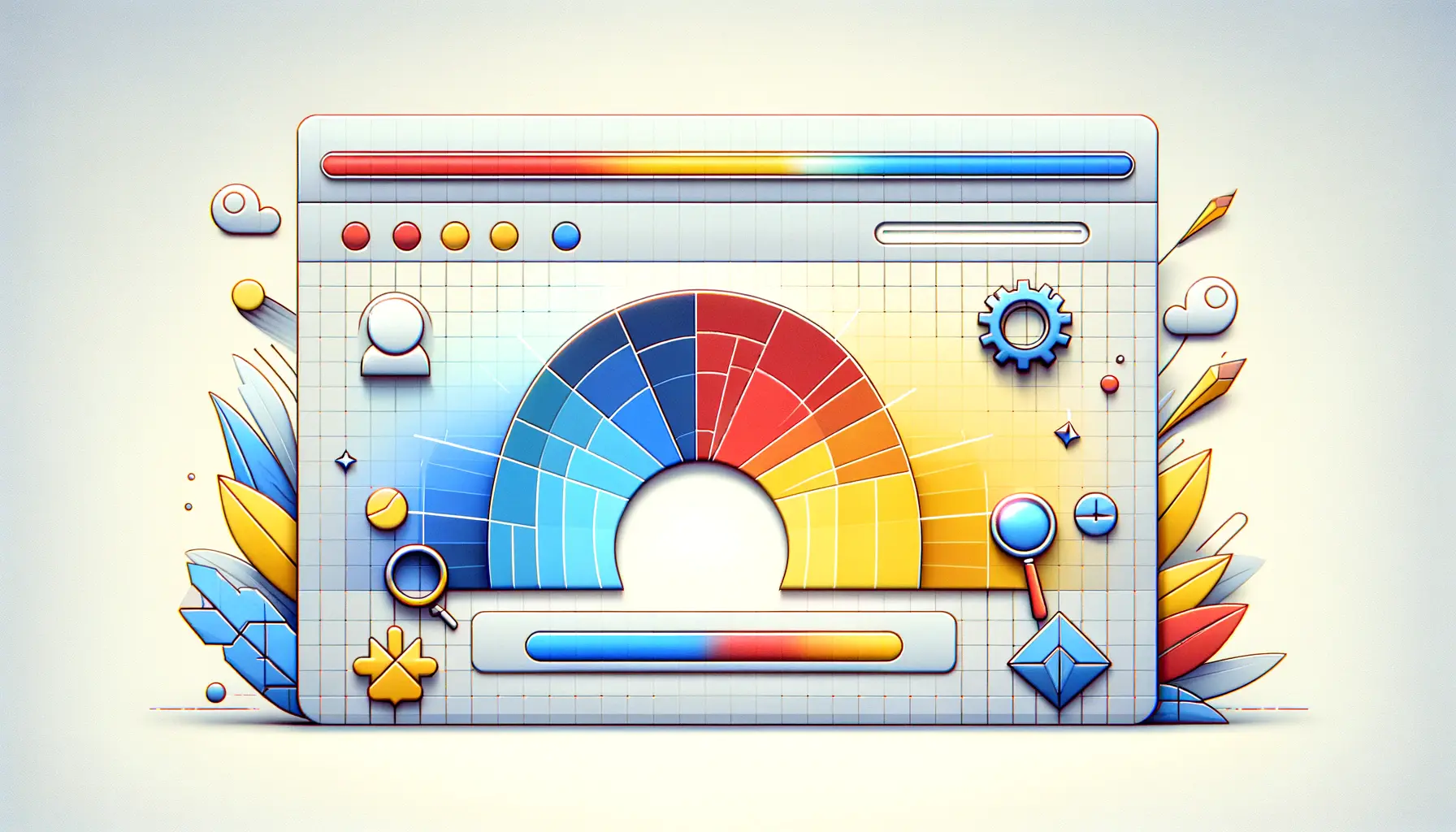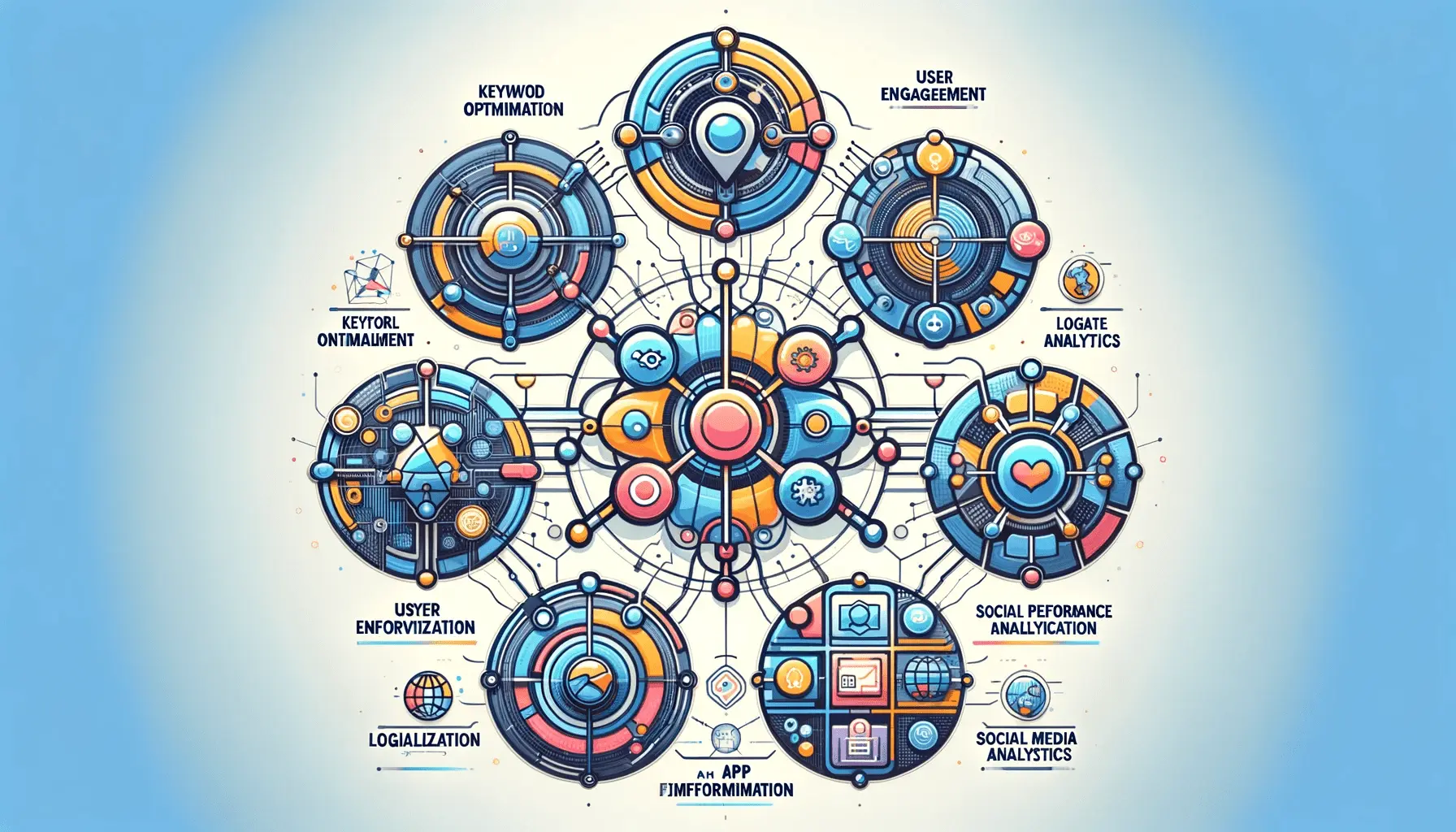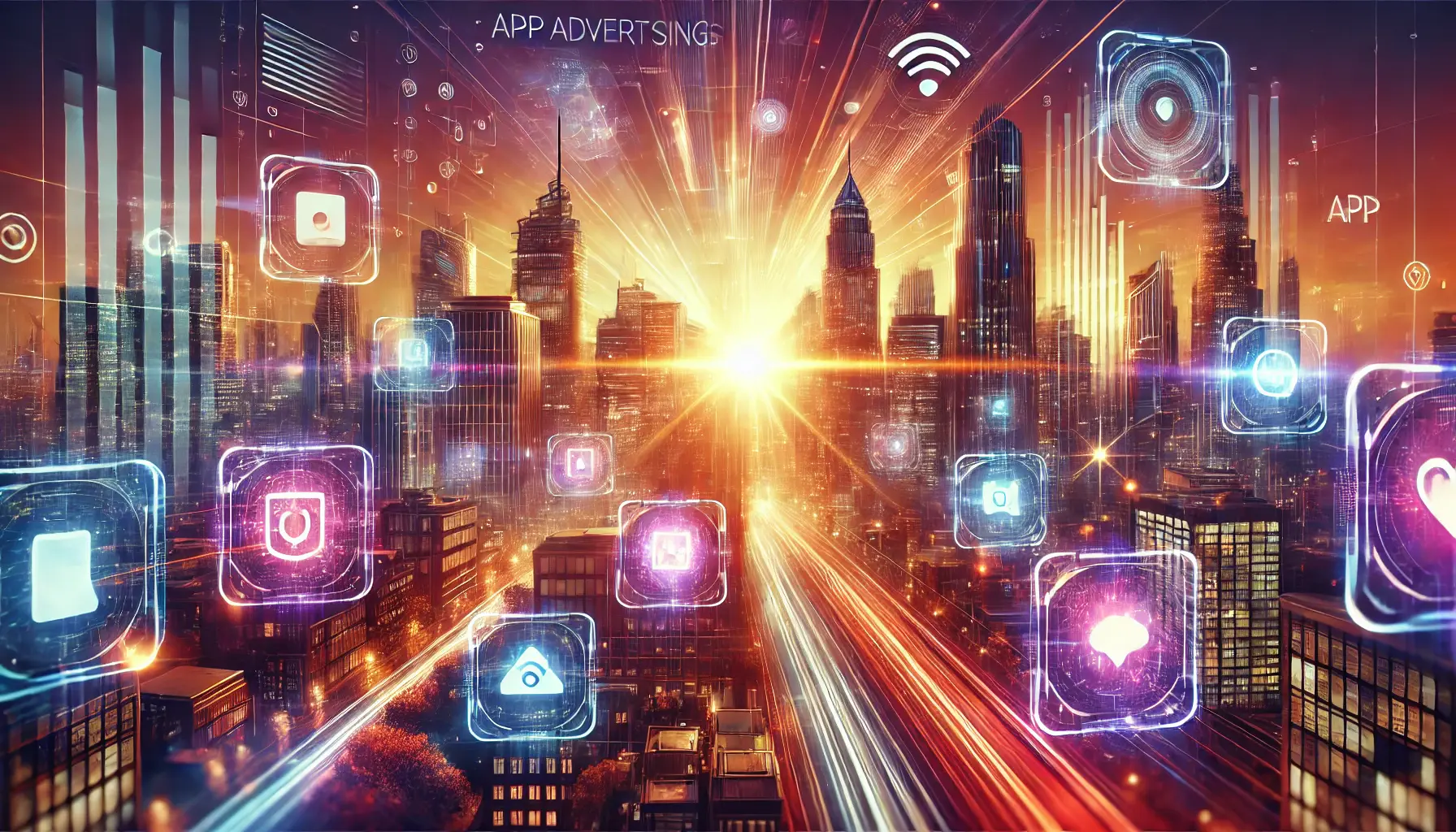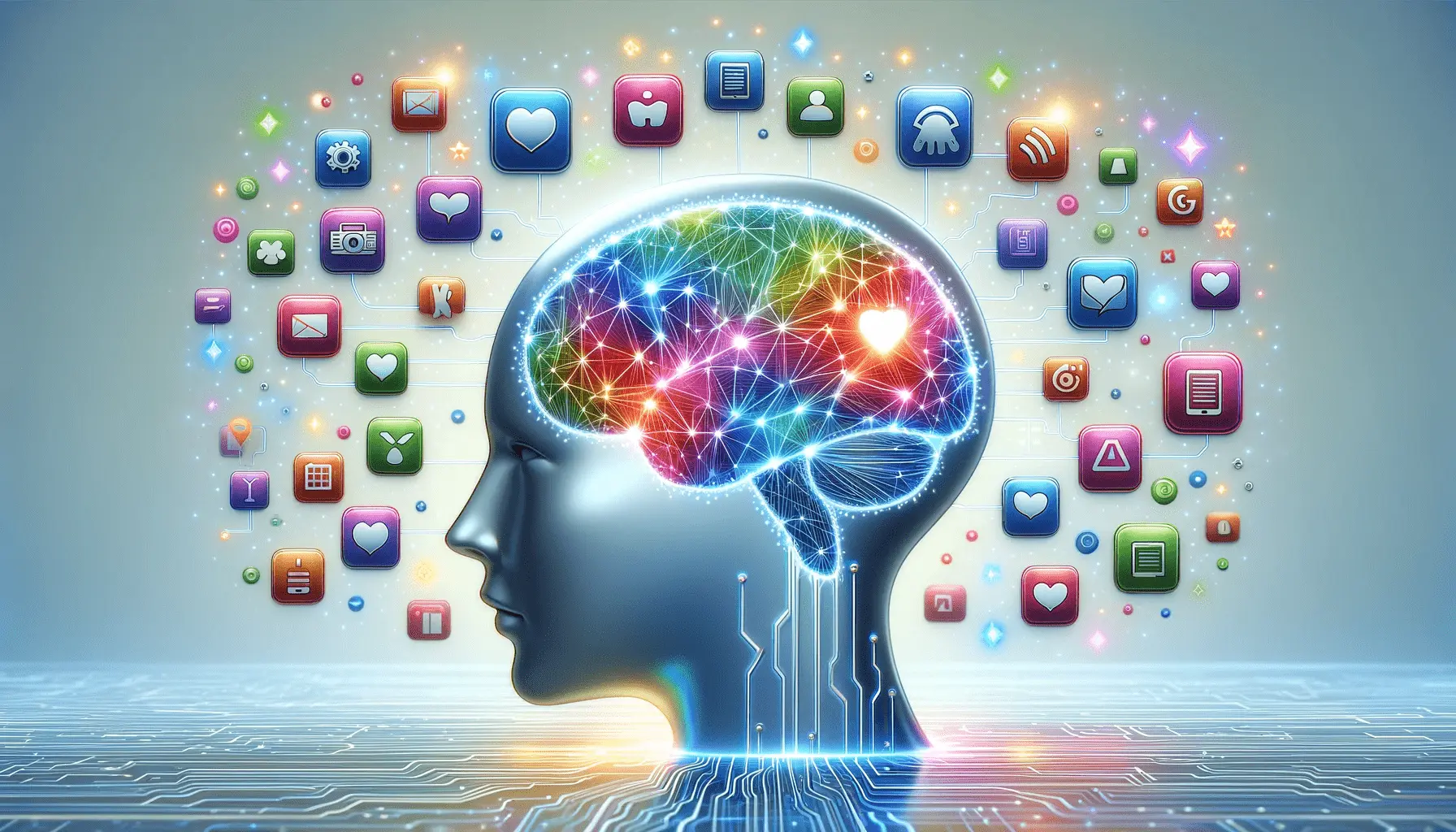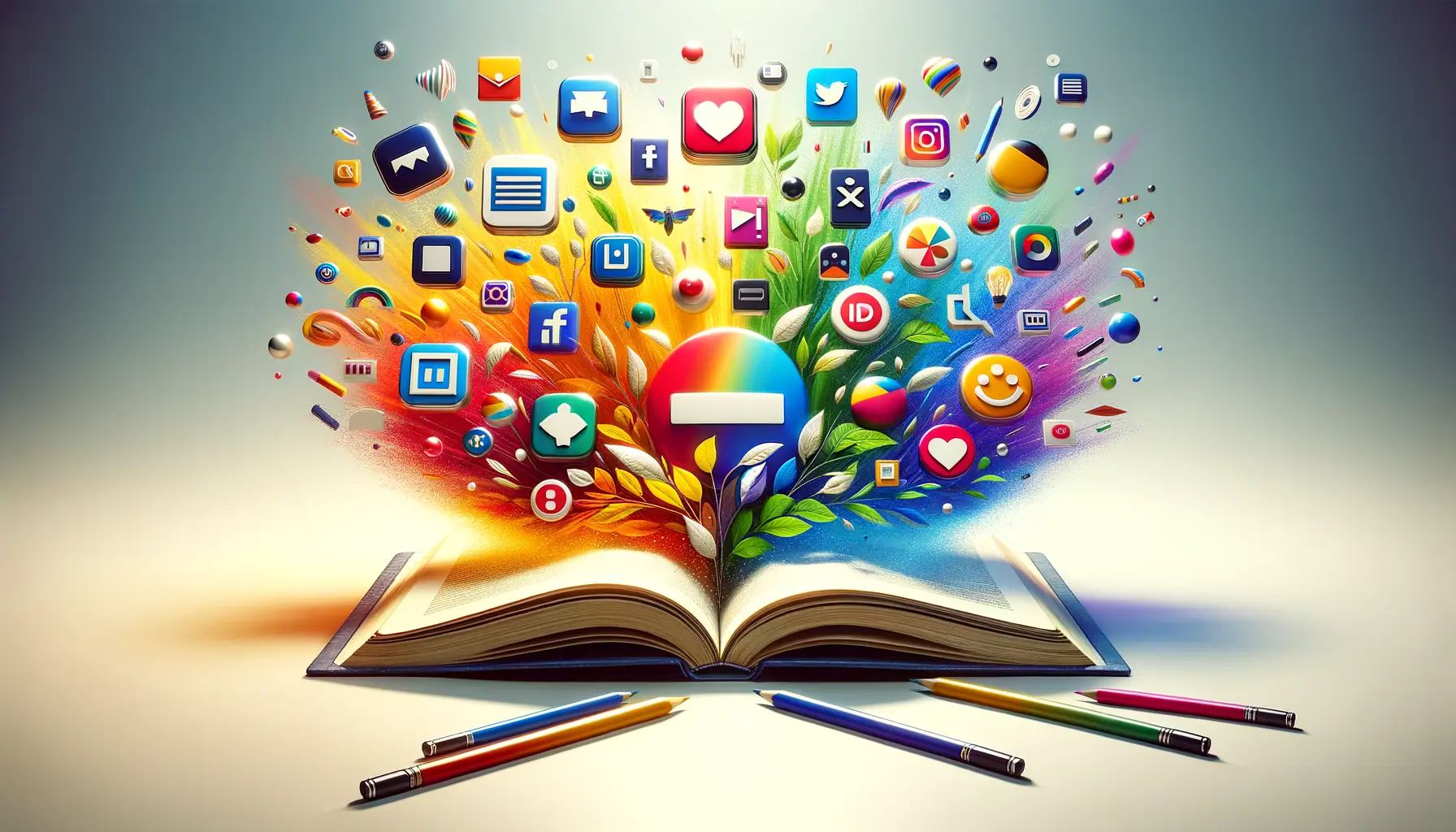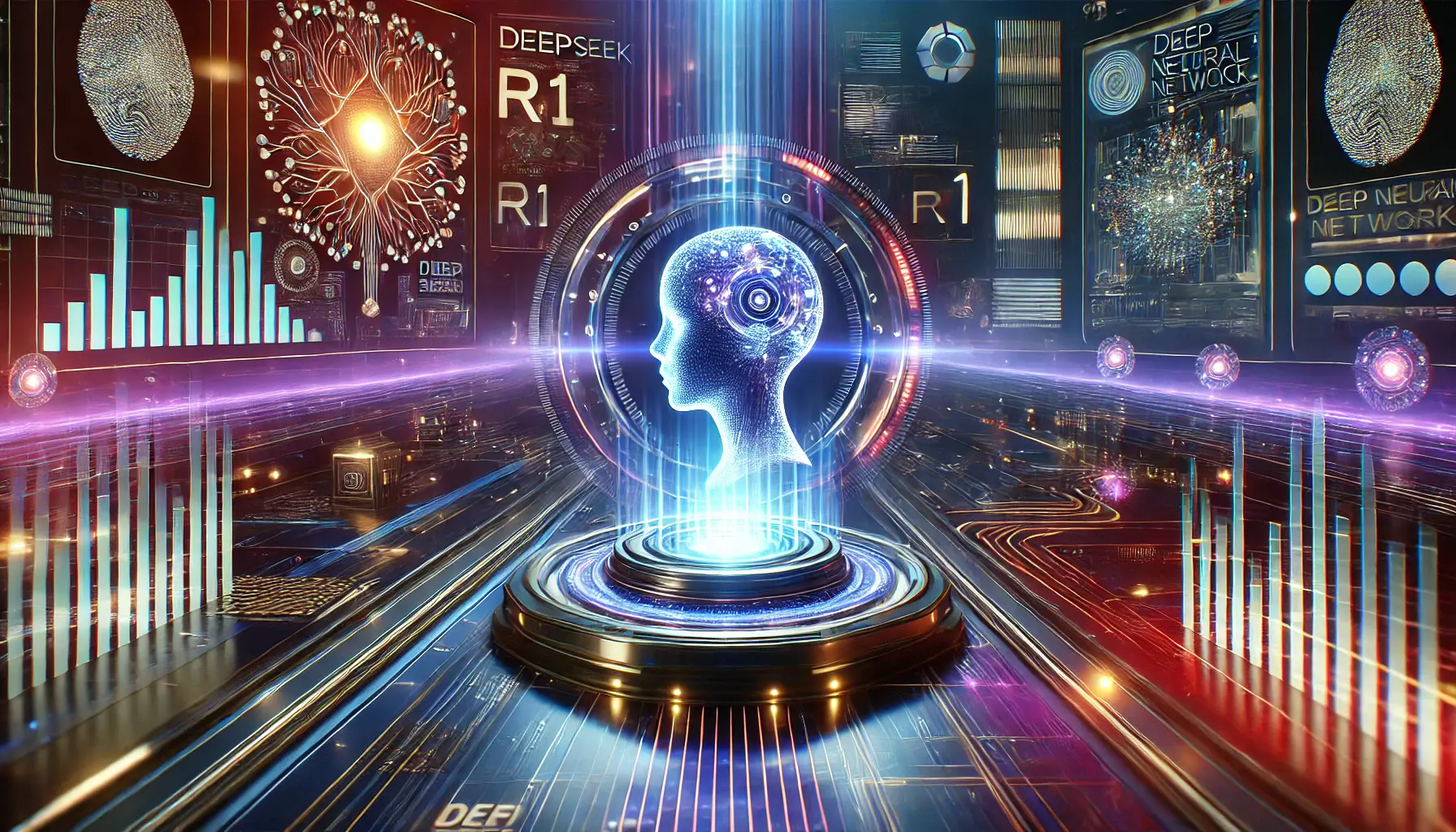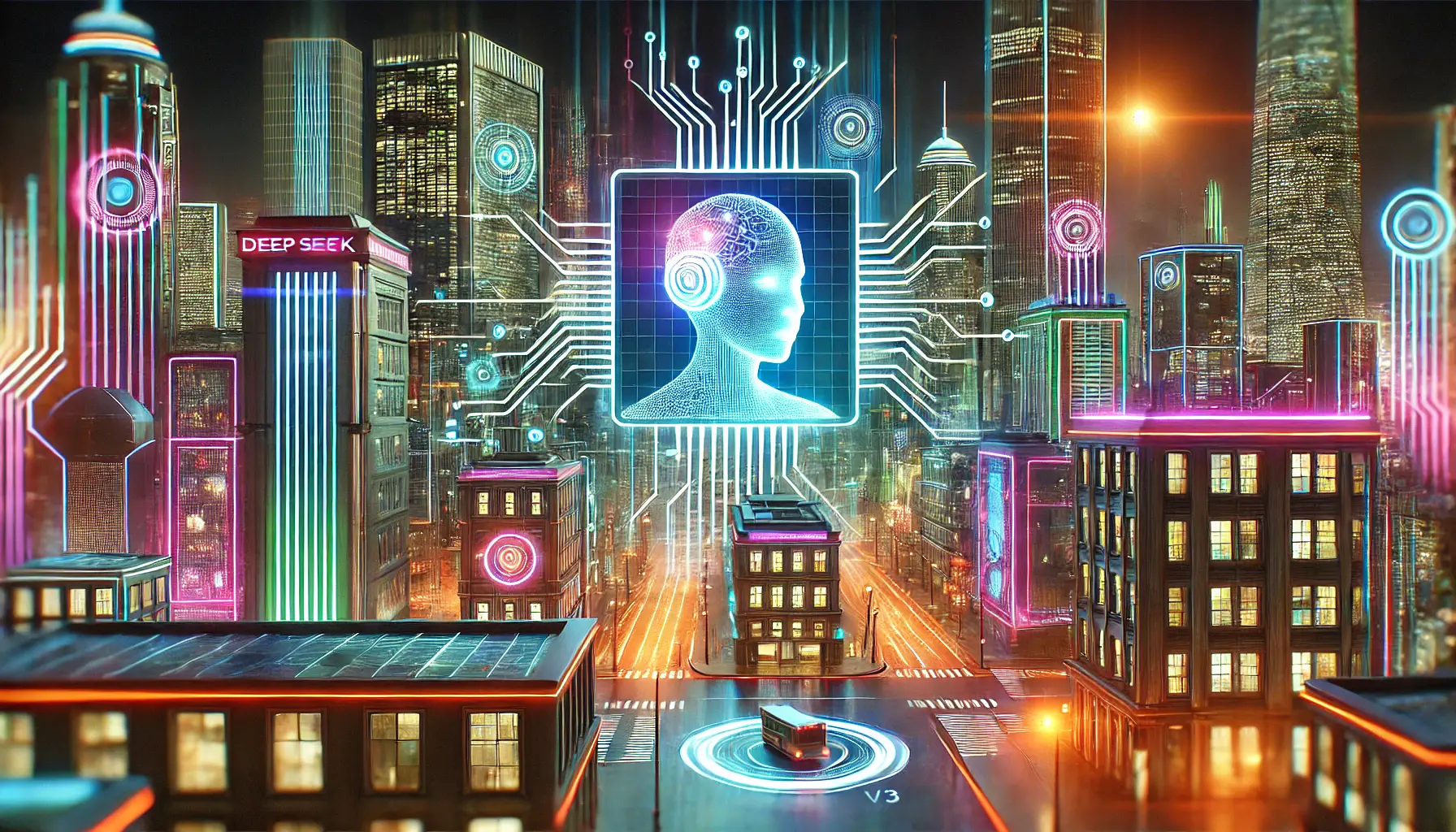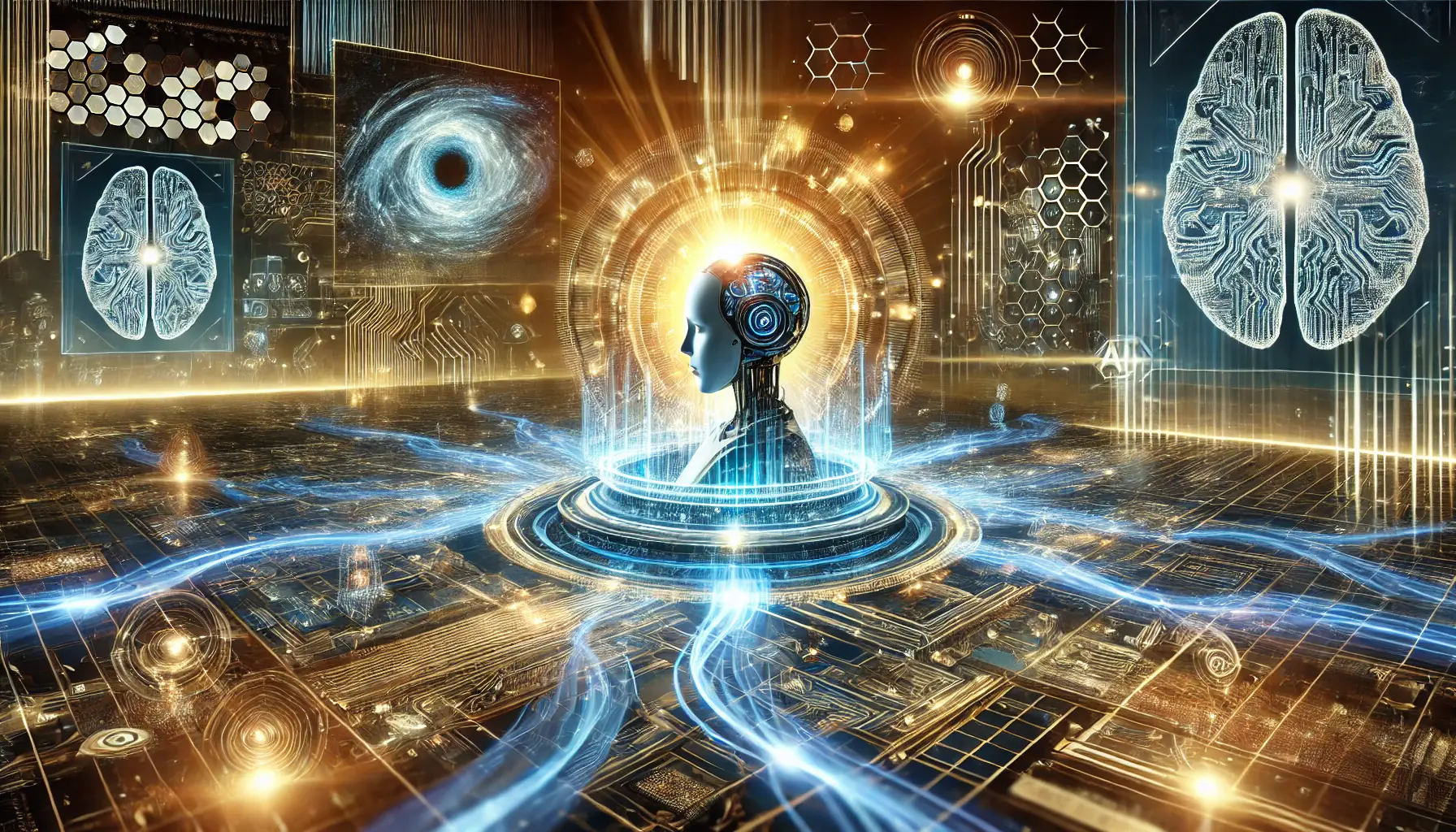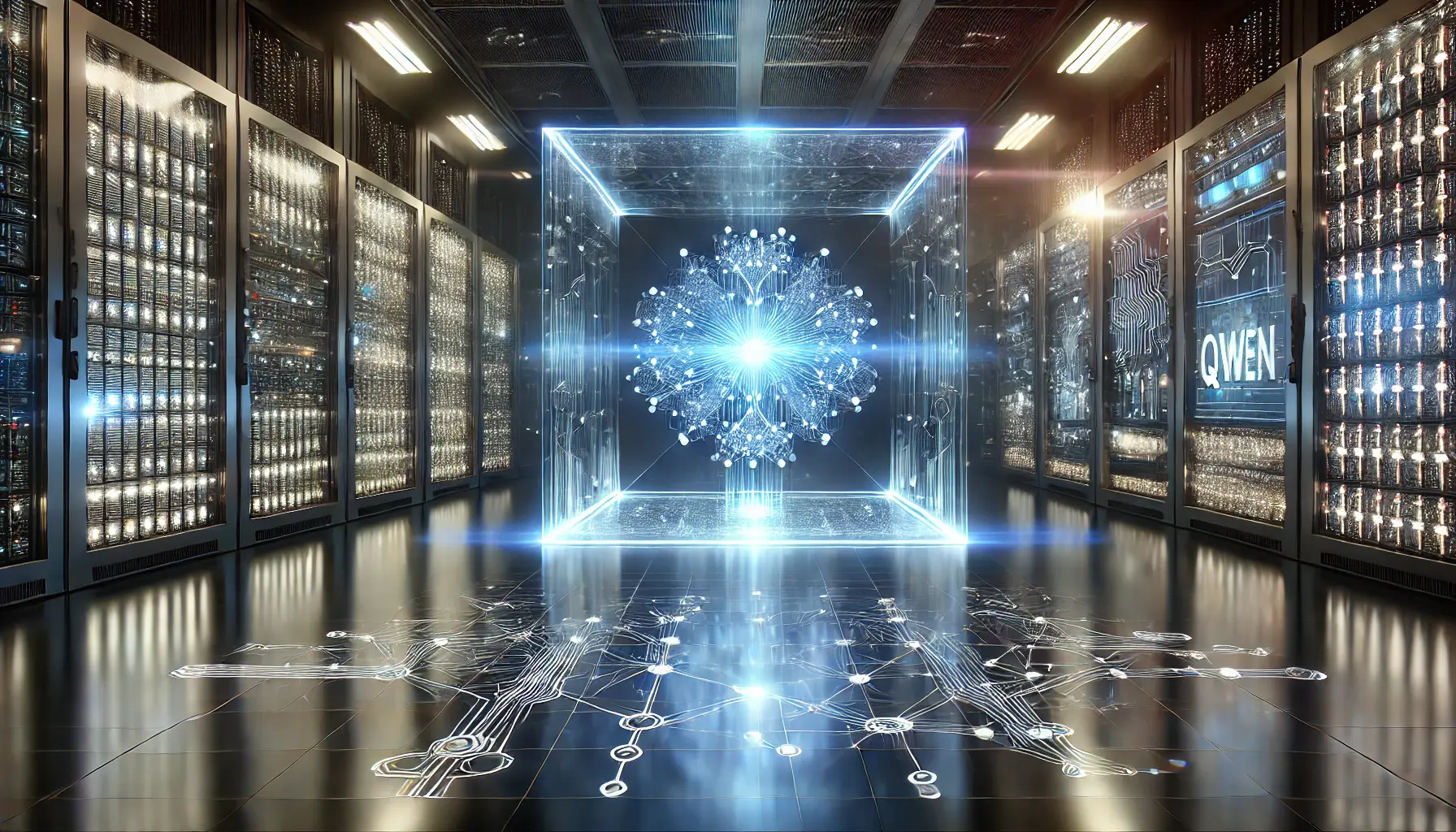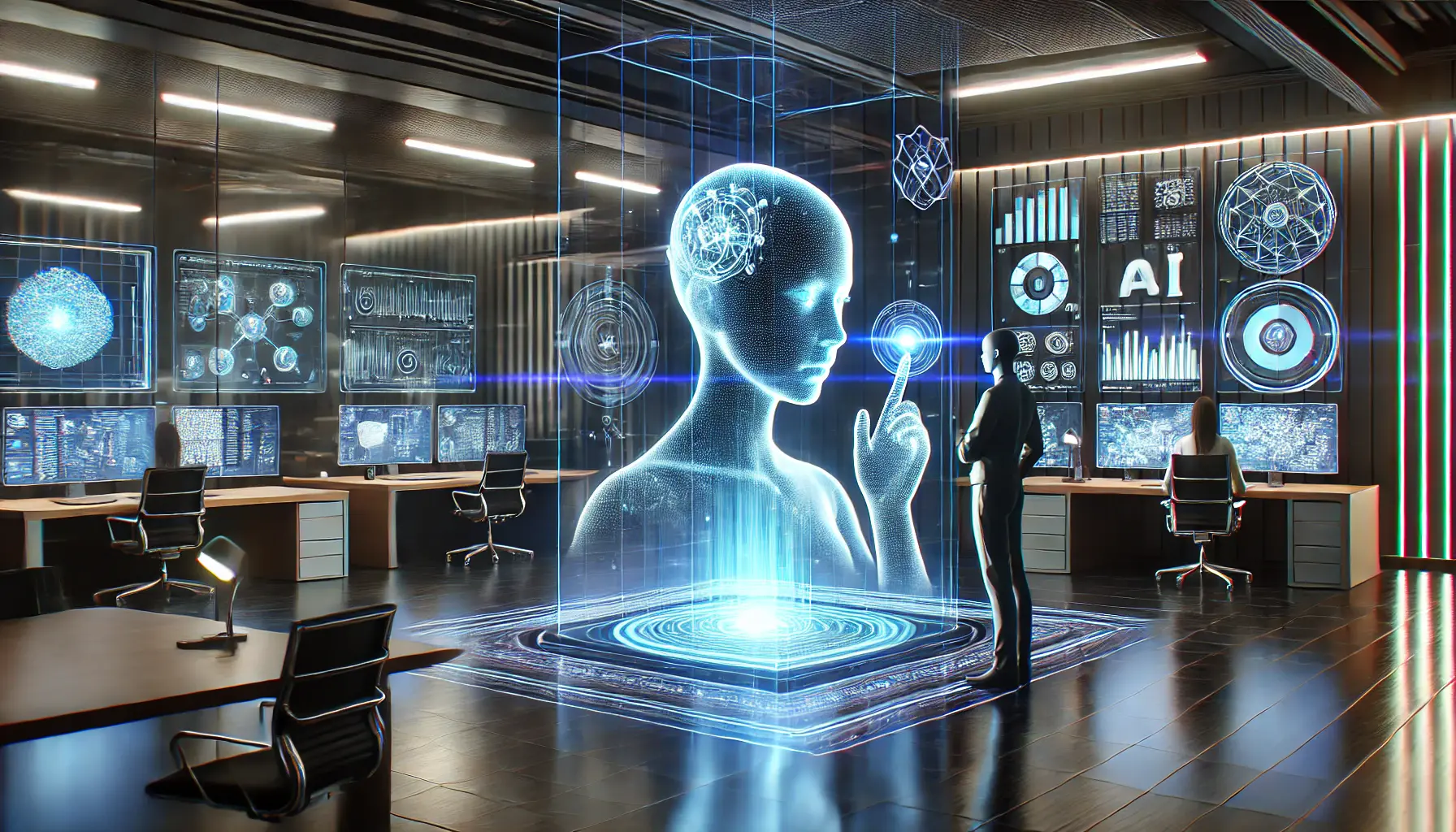Artificial Intelligence is changing how web design is done at a speed that cannot be matched.
AI is a powerful tool that is revolutionizing every aspect of web design, from the initial concept to the final product.
With both businesses and consumers depending on digital interactions, there has been an increase in the need for more sleek, personalized, efficient, and entertaining websites.
AI-driven tools are now essential in meeting these growing demands.
AI concepts that involve processing considerable data and making decisions in real-time have allowed for fulfilling user expectations, making web experiences more dynamic and engaging.
Whichever level of professionalism you are in designing, there is a need to understand how AI has been used to shape this digital industry.
Staying informed about AI trends is crucial for remaining competitive in the rapidly evolving web design landscape.
This article will discuss how AI has influenced web design, what is required to ensure your relevance, and related tactics that would help you tap into the power of AI to create imaginations and possibilities for the most attractive website.
How AI is Revolutionizing Web Design
With AI, several definitions in web design have been redefined, including responsive, intuitive, and user-friendly design.
AI has injected some sense of intelligent thinking, performance optimization, and data-driven recommendations among designers, allowing them to compete in the stiff digital market.
At its center, Artificial IntelligenceA branch of computer science focused on creating systems capable of performing tasks that normally require human intelligence. is defined as utilizing intelligent algorithms to improve the design plan.
AI can analyze user data, forecast trends, and construct tailor-made design components for the target audience.
AI not only makes the design process faster but also smarter and more efficient.
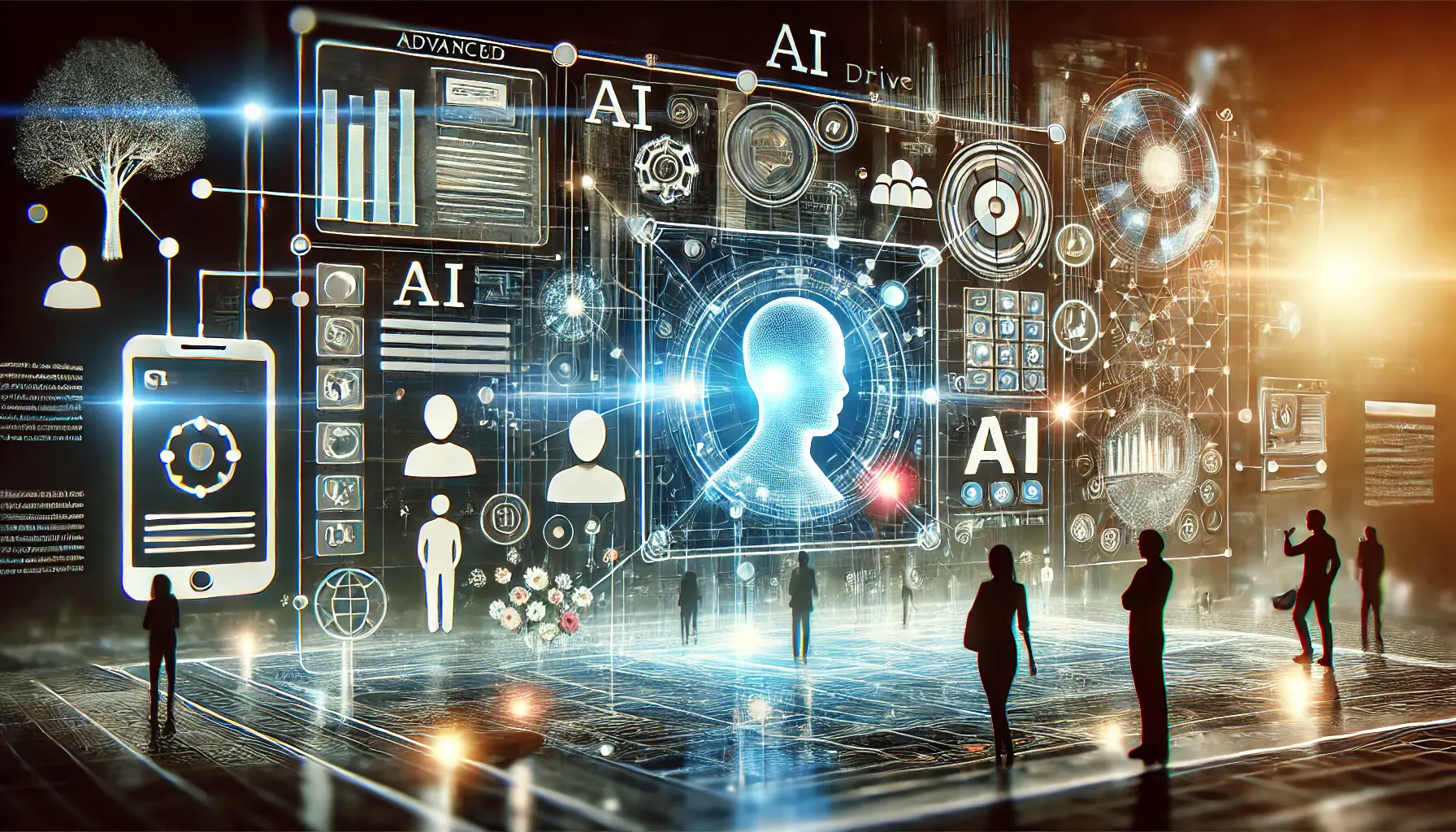
AI enhancing web experiences through dynamic personalization.
AI-Driven Personalization
This is one of the most significant ways that AI is shaping the process of web design.
Because AI can analyze vast amounts of user data, it is able to personalize the content available to each user.
This level of personalization increases engagement and enhances the user experience, making websites more relevant and user-friendly.
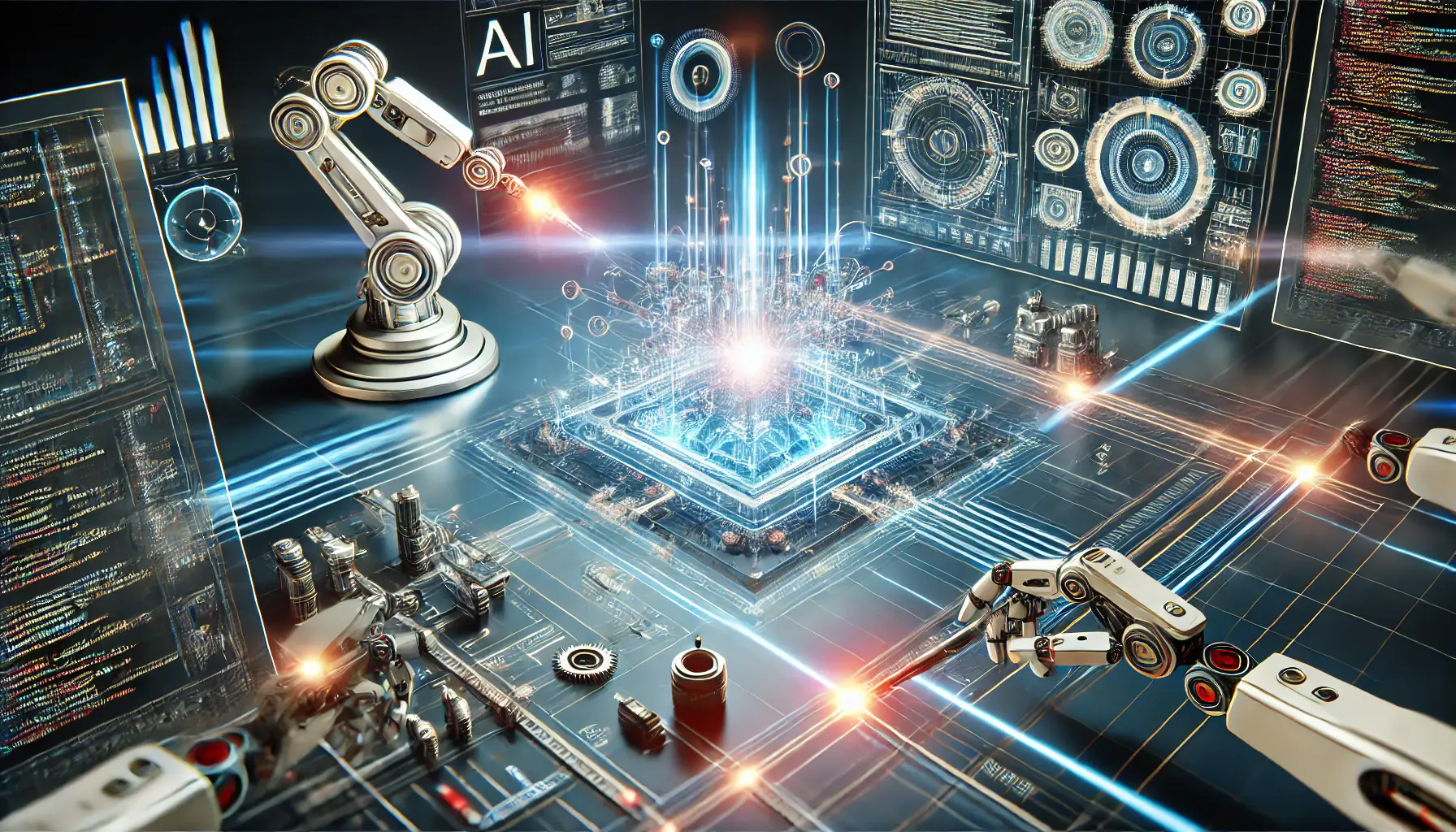
AI streamlining web design by automating repetitive tasks.
Automating Repetitive Tasks
Designers have, over the years, struggled with some repetitive tasks, including resizing images, ensuring responsive visibility across devices, and generating optimal code for websites.
However, AI tools have been developed that simplify these processes.
This automation frees up time for designers to focus on more creative aspects of the design process, ultimately benefiting the user.
AI has been shaping not only how the design is made but also the output, leading to more functional and aesthetically pleasing websites.
Would you like to learn more about how AI can help you create beautiful and effective websites?
Cutting-edge tools of AI for web design are revolutionizing the way we create digital experiences.
Create cutting-edge web design with essential AI tools to stay ahead in today’s rapidly changing design landscape.
Having the right AI tools is essential to keep up with the competition, especially as Artificial Intelligence continues to transform the industry.
These tools not only streamline design but also open up new creative possibilities that were once impossible.
In conjunction with AI, designers can create websites that aren’t just beautiful but also user-friendly, functional, and optimized for performance.
Here are some critical AI tools that can help you take your web design to the next level:
- AI design assistants: your partner in crime – Modern web design relies heavily on AI design assistants to help designers with style adherence, recommending layouts, colors, and structures based on the latest trends and user preferences. With AI’s ability to process large volumes of data, design options generated are meant for the target audience, ensuring the end product is not only aesthetically pleasing but also attractive to clientele. For example, Adobe Sensei and Figma’s AI-powered features can automate tasks such as cropping, color correction, and layout adjustments. Such AI tools reduce the list of repetitive activities for designers, ensuring they spend more time on creativity.
- Low Code / No Code platforms – Non-developers are now able to join the web development game courtesy of low code and no code platforms. AI-driven platforms suggest automatic code snippets, offering online design guidelines and providing real-time feedback on the design process, which makes the web development process seamless. Webflow and Bubble have dominated this sector, providing AI-driven tools that help users create design-responsive websites. These tools also optimize performance features and allow users to add complex features without coding.
AI tools will help you create a web design that not only meets user expectations but exceeds them.
This design is suitable for both experienced designers and novices, providing a stepping stone for achieving more in the web design sector.
AI is a powerful tool that is revolutionizing every aspect of web design, from the initial concept to the final product. Staying informed about AI trends is crucial for remaining competitive in the rapidly evolving web design landscape.
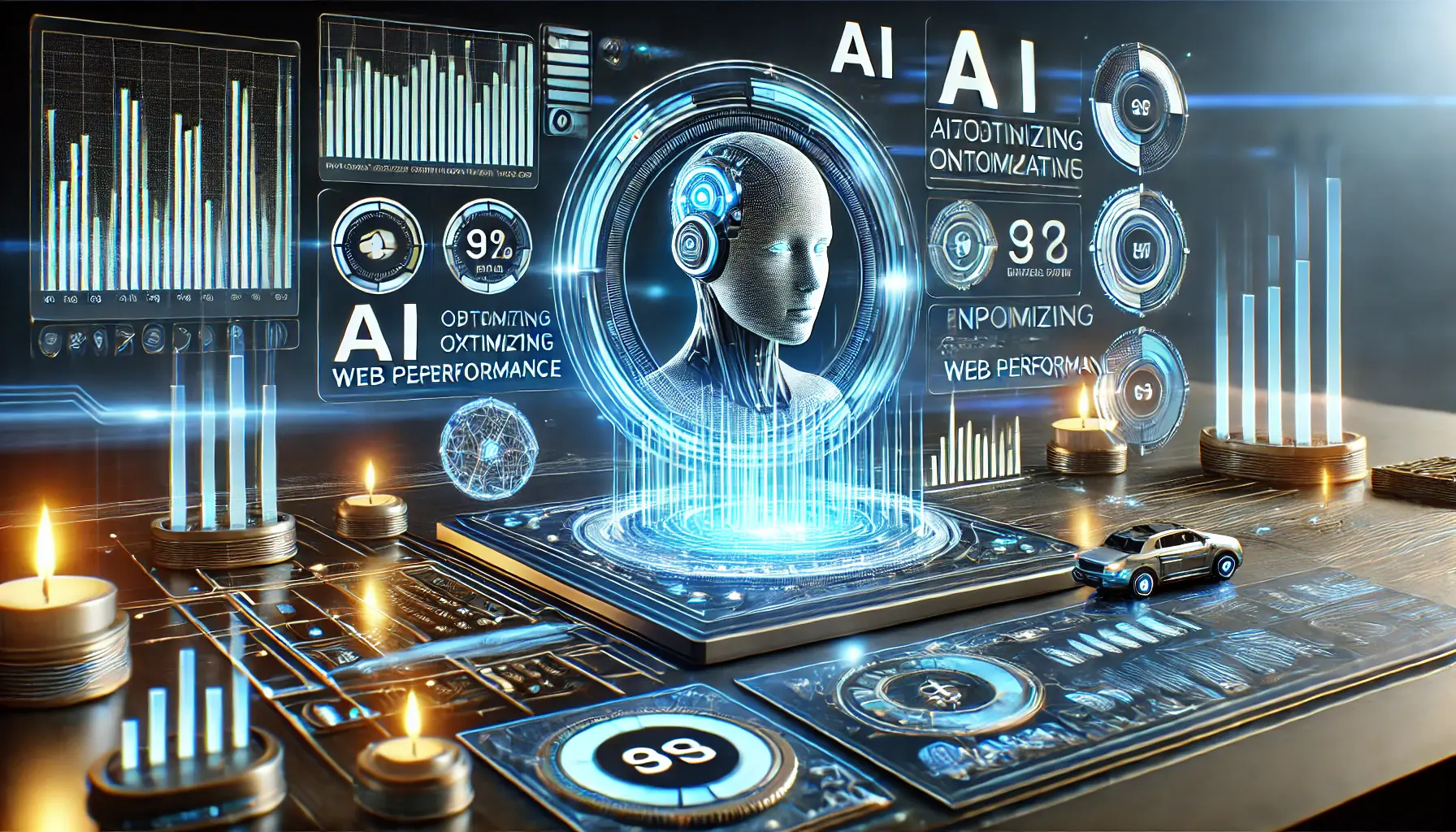
AI optimizing web performance with real-time monitoring and enhancements.
Applying AI Strategies for Superior Web Performance
Performance is key in the competitive arena of web design.
AI has brought in new, innovative strategies that improve not only the efficiency of web development but also lead to a significant improvement in the overall performance of websites.
Applying such AI strategies guarantees a faster and more responsive website, better optimized for both search engines and user experiences.
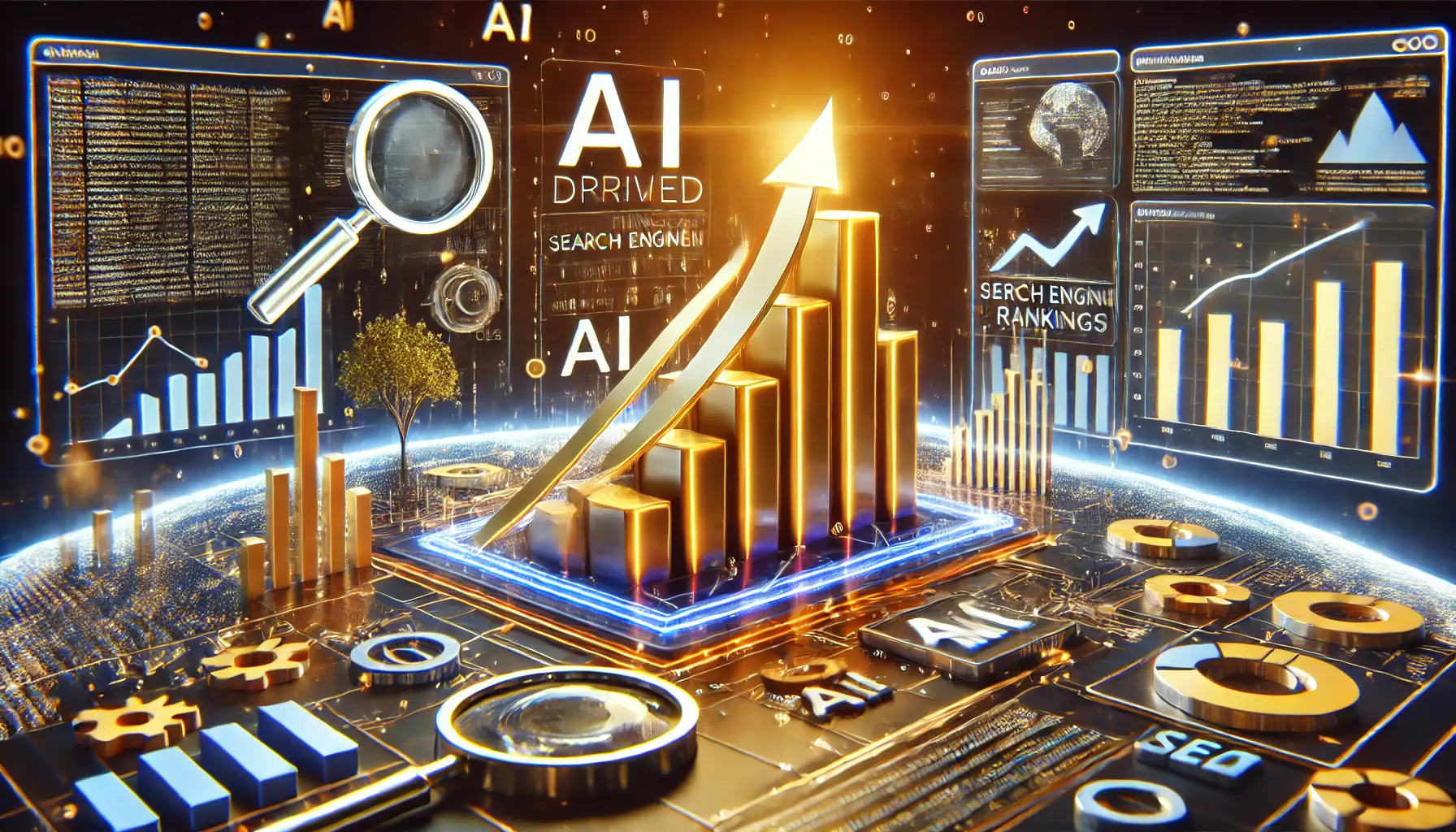
AI enhancing SEO strategies to achieve higher search engine rankings.
SEO-Optimized Strategies with AI for Higher Rankings
SEO is crucial for any website.
Artificial Intelligence tools are making a significant change in SEOSearch Engine Optimization, the process of improving a website's visibility on search engines. these days, as they automate the analysis of keywords, optimize content, and predict search trends.
Such AI-driven techniques enable websites to achieve top rankings on SERPsSearch Engine Results Pages, the pages displayed by search engines in response to a query by a user. and grow organic traffic.
For instance, AI tools like Clearscope and MarketMuse study the best-ranking content in your niche and give recommendations on how to best position your content to be more competitive.
They consider keyword density, readability, relevance, and more to ensure your content is crafted per current best practices for search engine optimization.
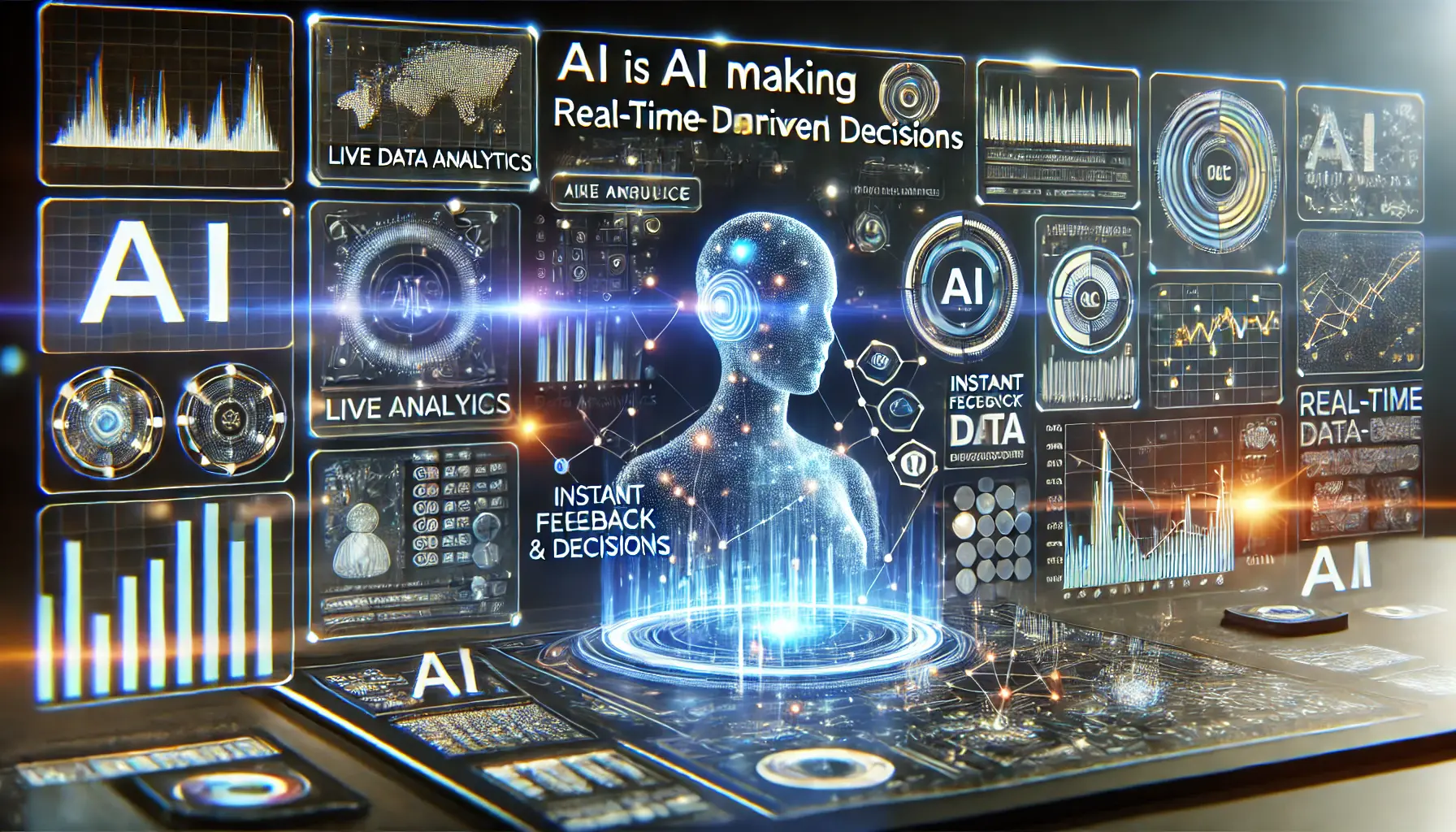
AI making precise, real-time decisions using live data analytics.
Leverage AI for Real-Time Data-Driven Decisions
Data-driven decisions build the path to creating a truly user-centered website.
AI excels in analyzing large sets of data in real time and provides actionable insights that can be implemented instantly.
These insights range from patterns in user behavior to how well your website is performing, allowing designers to make informed decisions that enhance the user experience.
Analytics tools, such as Google Analytics 4 and Hotjar, driven by AI, provide immediate feedback about user interaction, page load times, and bounce rates.
This allows designers to make iterative improvements to the website, ensuring it remains user-friendly and efficient.
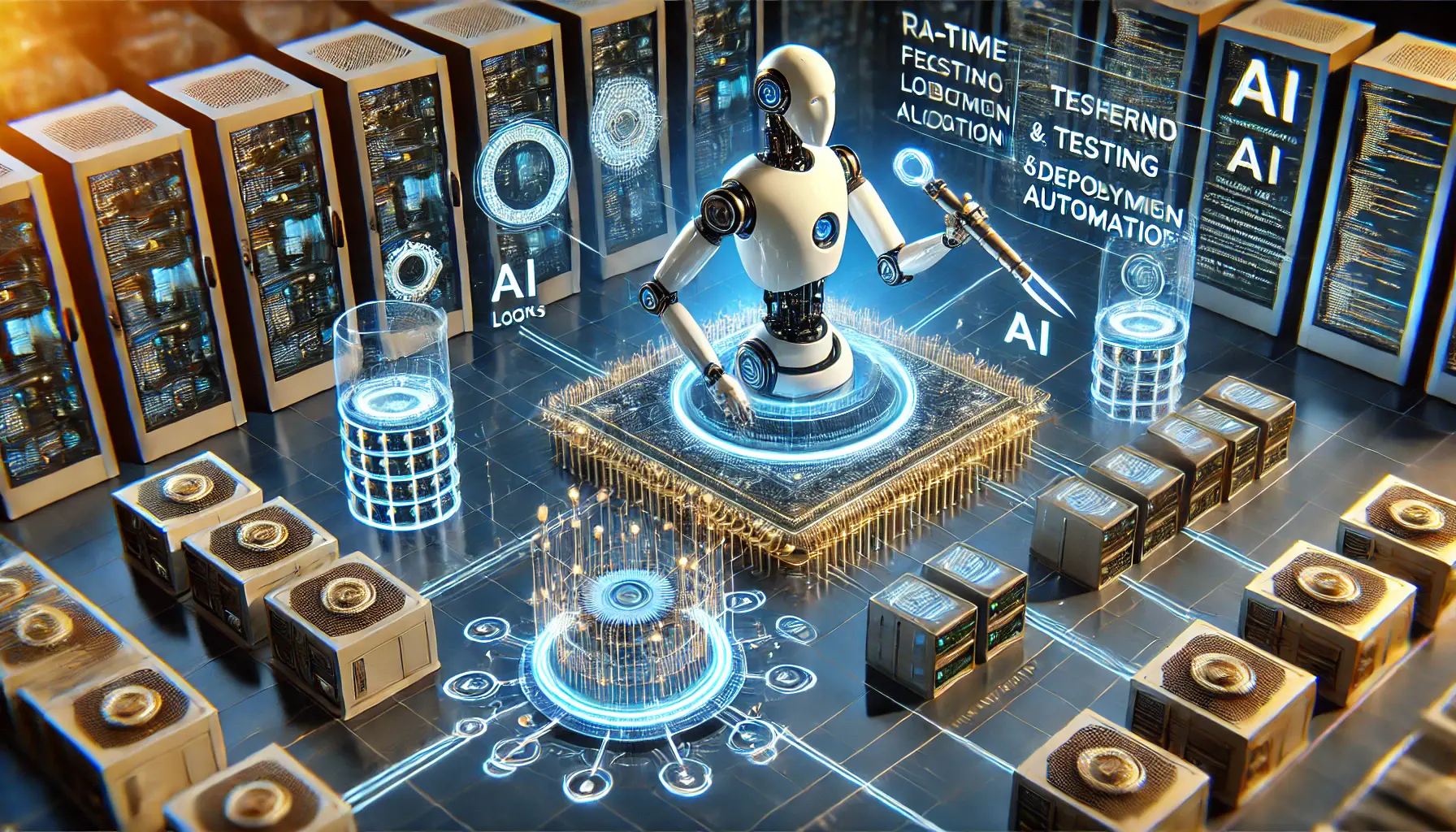
AI ensuring seamless testing and deployment automation in web development.
AI-Powered Testing and Deployment Automation
Testing and deployment are sensitive stages in web development, often prone to human errors and time-consuming.
AI streamlines these processes by automating testing procedures and optimizing deployment strategies.
This not only accelerates the development cycle but also reduces the chances of errors, resulting in more reliable websites.
Tools like Testim and Jenkins use AI to automate test scenarios, flag potential issues, and even suggest fixes.
AI-powered deployment tools configure servers optimally and manage resources efficiently, ensuring a smooth and successful launch.
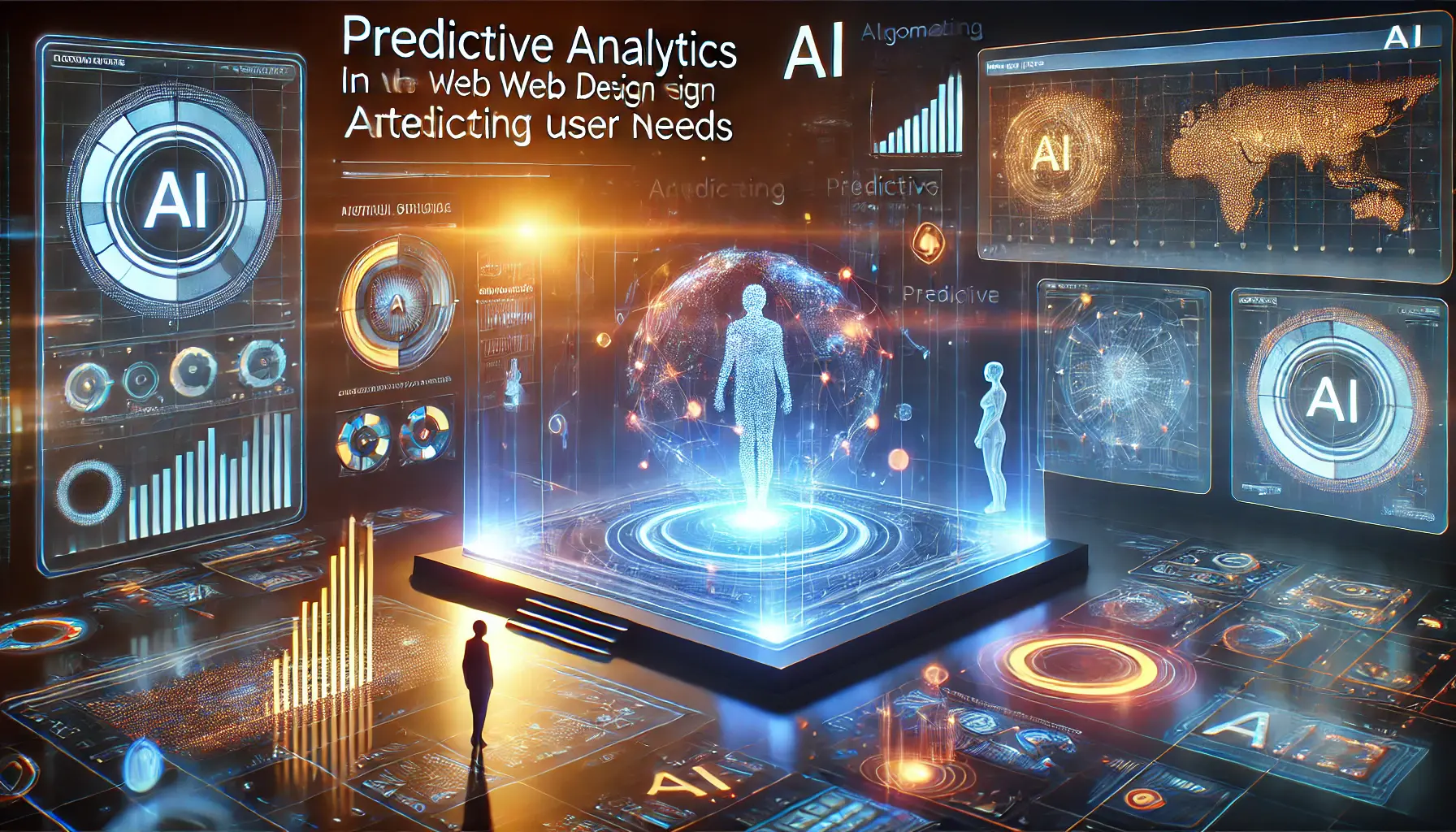
AI anticipating user needs through predictive analytics in web design.
Predictive Analytics: Anticipating User Needs
One of the most powerful applications of AI in web design is predictive analyticsThe use of data, statistical algorithms, and machine learning techniques to identify the likelihood of future outcomes based on historical data..
AI algorithms analyze historical data, identify patterns, and predict future trends, allowing designers to anticipate user needs before they arise.
AI-powered tools such as Pendo and Mixpanel track user interactions and predict trends, enabling designers to develop proactive strategies that meet user demands before they actually emerge.
This forward-looking approach enhances user satisfaction and keeps the website ahead of the competition.
By integrating these AI strategies, web designers can significantly enhance the performance and effectiveness of their websites.
Whether it’s optimization for search engines, data-driven decisions, automation of processes, or anticipating user behavior, AI provides the necessary tools to stay competitive in the fast-paced world of web design.
AI has brought in new, innovative strategies that improve not only the efficiency of web development but also lead to a significant improvement in the overall performance of websites.
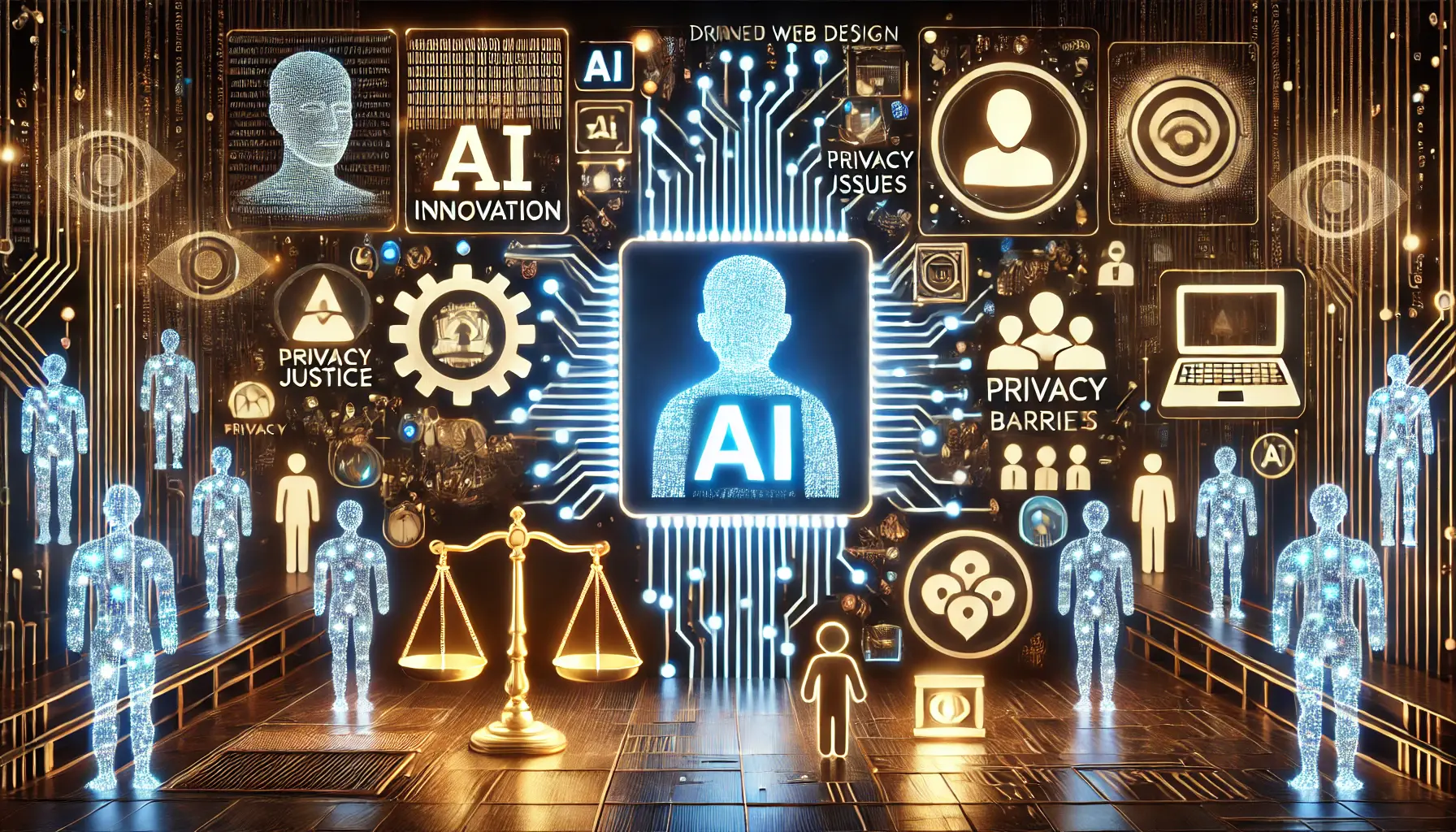
Balancing AI innovation with ethical considerations in web design.
Challenges and Ethical Issues in AI Web Design
Although AI comes with several benefits, the revolution of artificial intelligence in web design introduces a set of challenges and potential ethical issues that designers need to address.
As AI continues to evolve, these challenges become more critical to consider.
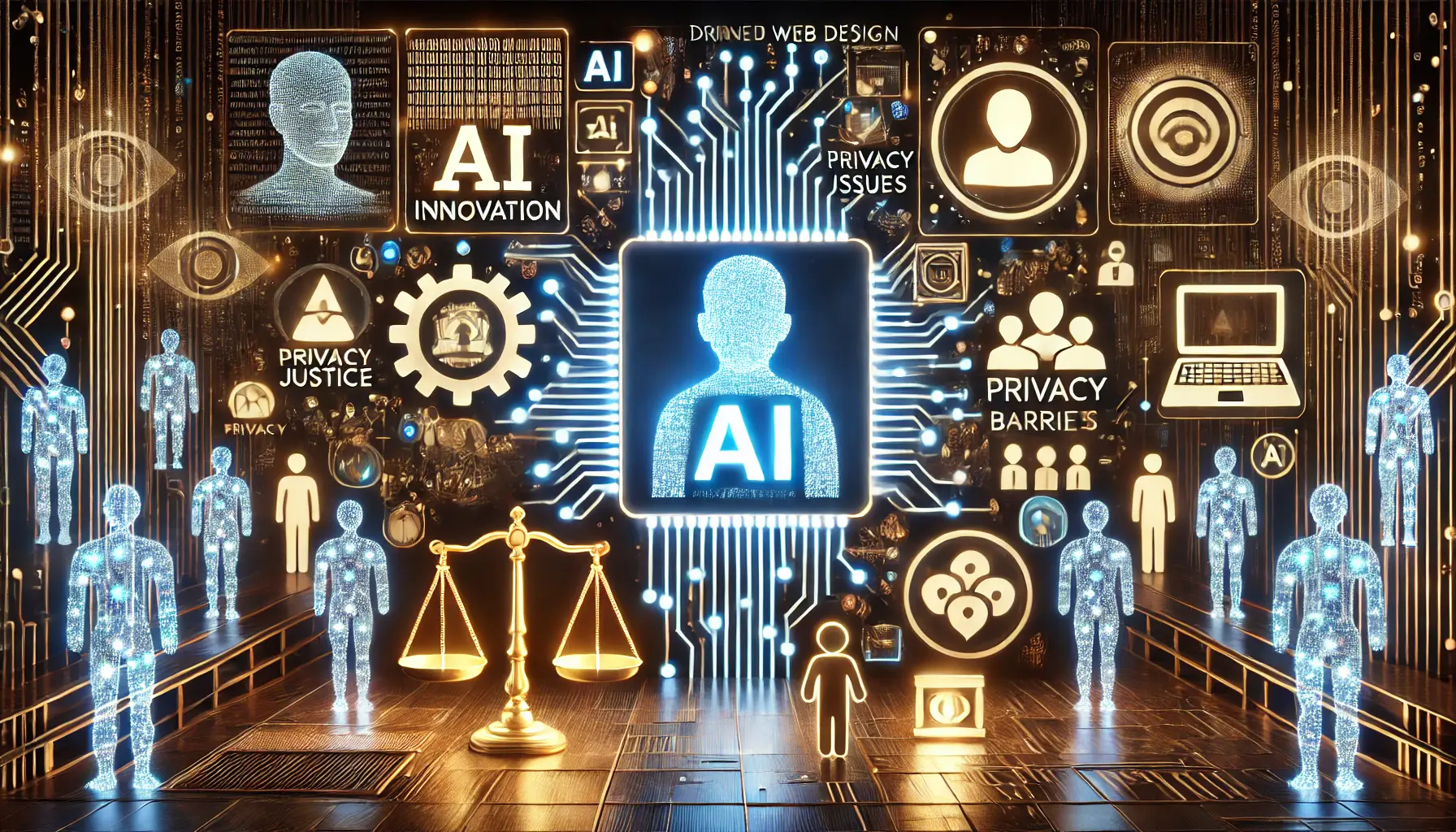
Balancing AI innovation with ethical considerations in web design.
Overcoming Bias in AI-Generated Designs
One of the frequently overlooked concerns in AI-generated designs is bias.
AI learns from each created website, and if it was trained on biased data, the designs it generates may reflect those same biases.
The concern here is that not all people are represented in the datasets available for AI training, which poses a risk of producing designs that are not inclusive or that favor certain user groups.
To mitigate this, it’s crucial to ensure that the data used to train AI models is diverse and representative of all user groups.
Regular audits and reviews of AI-generated content are also necessary to identify and correct any biases that may arise.
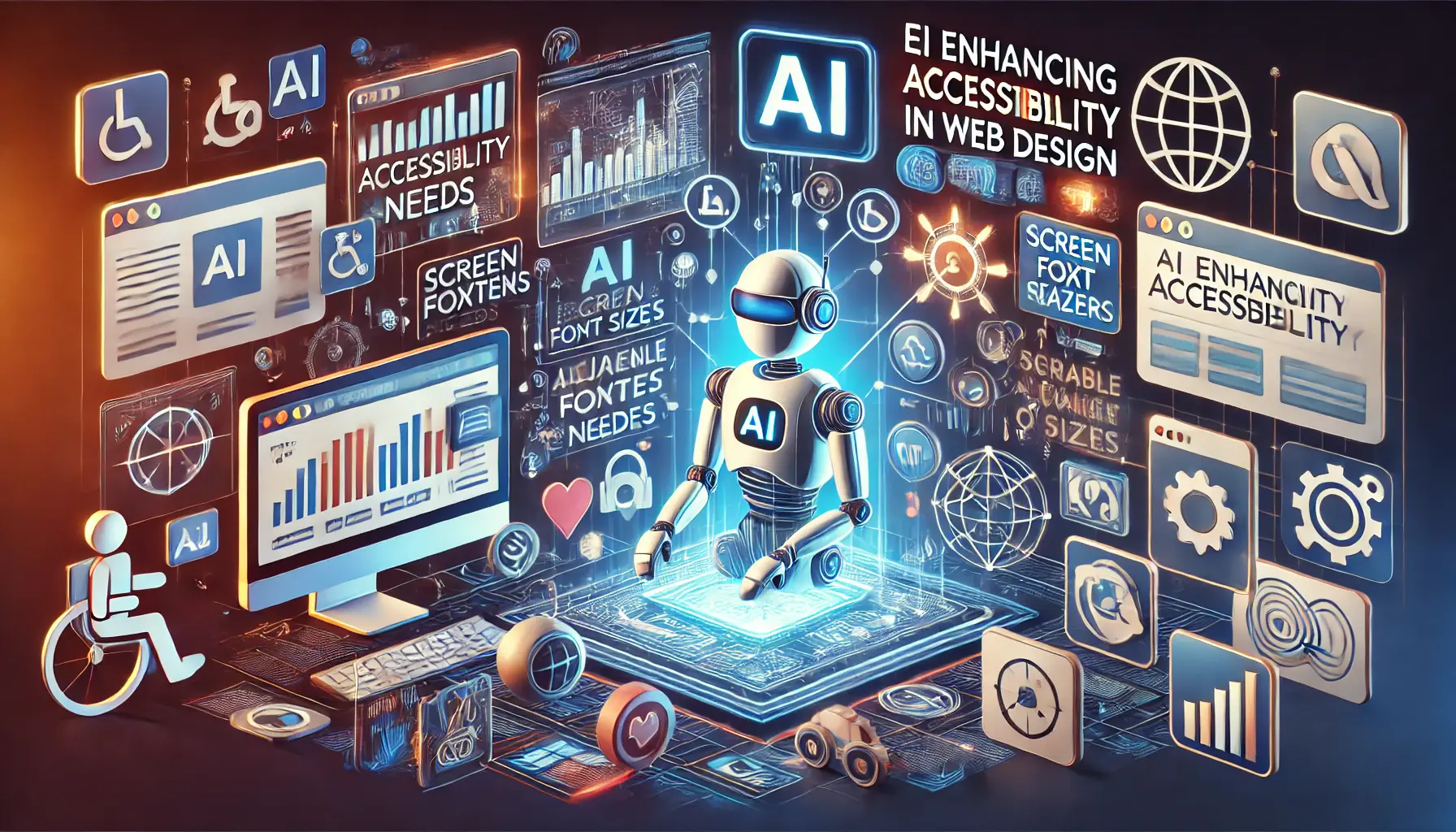
AI making web design more accessible and inclusive for all users.
Ensuring Accessibility with AI
Another ethical issue in AI web design is the potential neglect of the needs of disabled users.
Developers need to select AI tools that prioritize accessibility to ensure that all users, including those with disabilities, can benefit from the website.
AI can enhance accessibility by enabling features such as:
- Screen Reader Compatibility: AI tools analyze website content to ensure it is compatible with screen readers, making the website accessible to visually impaired users.
- Keyboard Navigation: AI can optimize websites for keyboard navigation, which is essential for users who cannot use a mouse.
- Automated Color Scheme: AI can adjust color schemes and visual elements to ensure they are high-contrast and easily distinguishable for visually impaired users.
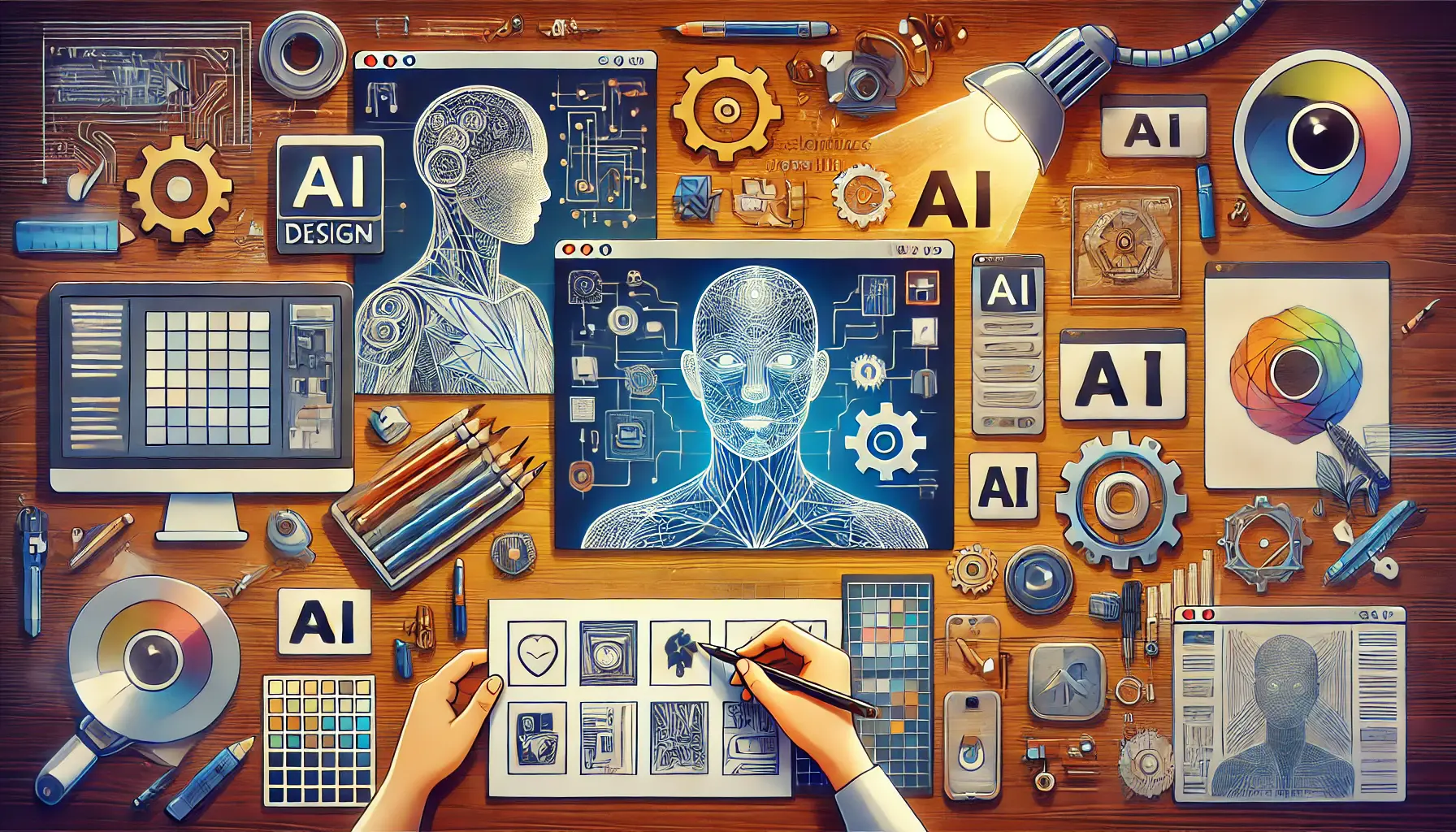
Harmonizing AI and human creativity in the web design process.
Striking the Right Balance Between AI and Human Creativity
While AI is excellent for automating repetitive tasks and streamlining the design process, there is a risk that over-reliance on AI could diminish human creativity.
The challenge lies in finding the right balance between using AI for efficiency and allowing human designers the freedom to express their creativity.
Designers should view AI as a tool to augment their work, rather than as a replacement for human input.
By relieving designers of menial, repetitive tasks, AI frees them to focus on more complex and creative aspects of web design, leading to more innovative and engaging designs.
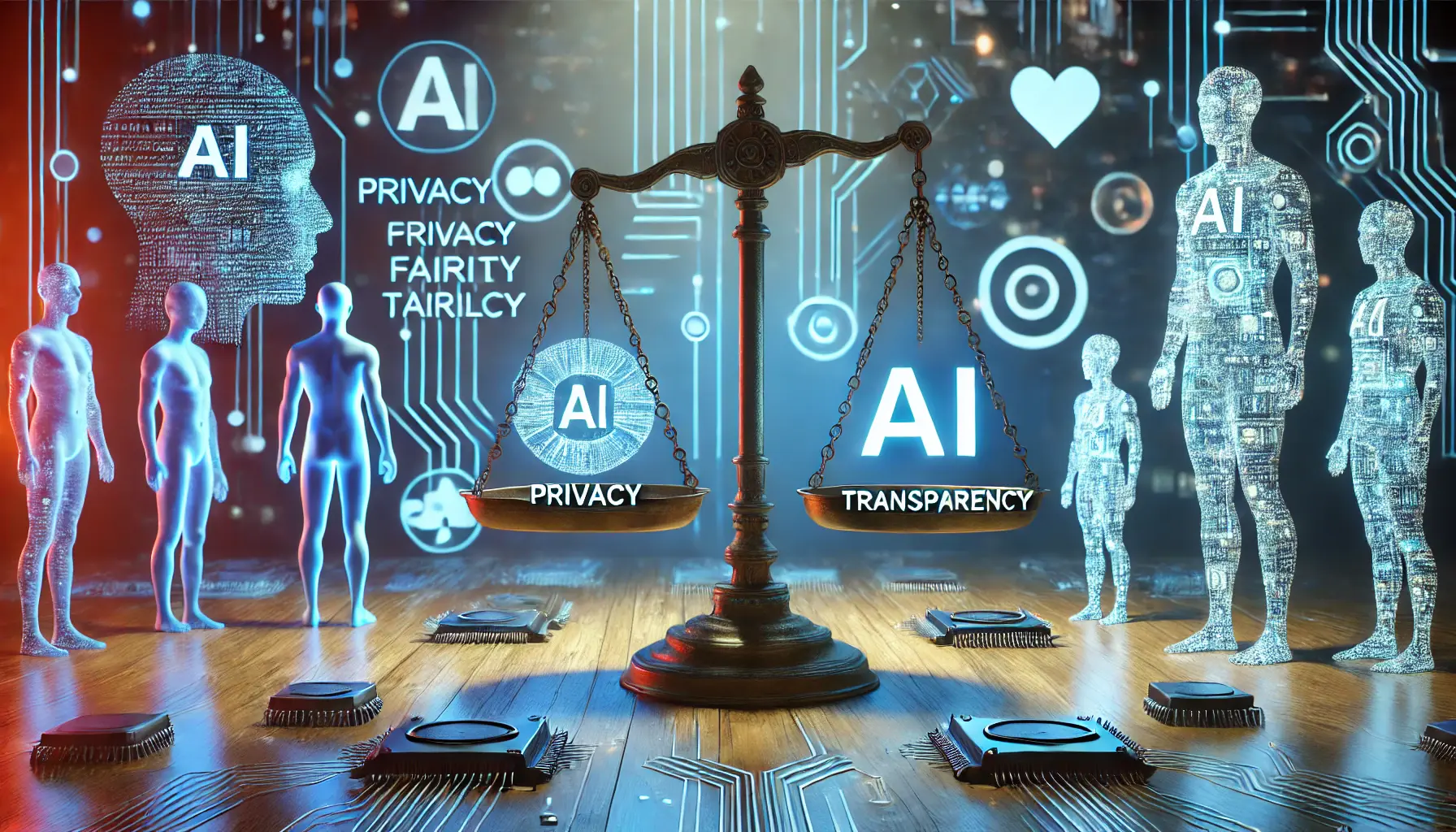
Navigating the complex ethical challenges of AI in web design.
The Challenge of AI Ethics
The widespread use of AI in web design raises important ethical questions about transparency, data privacy, and the potential for AI to replace human jobs.
Designers must consider the ethical dilemmas their AI-powered projects may create, ensuring that websites are respectful of users’ privacy, transparent about the use of AI, and supportive of human roles rather than replacing them.
Designers who can tackle these challenges and ethical considerations will provide innovative, purposeful AI web designs that are both responsible and inclusive.
Although AI comes with several benefits, the revolution of artificial intelligence in web design introduces challenges and potential ethical issues that designers need to address.
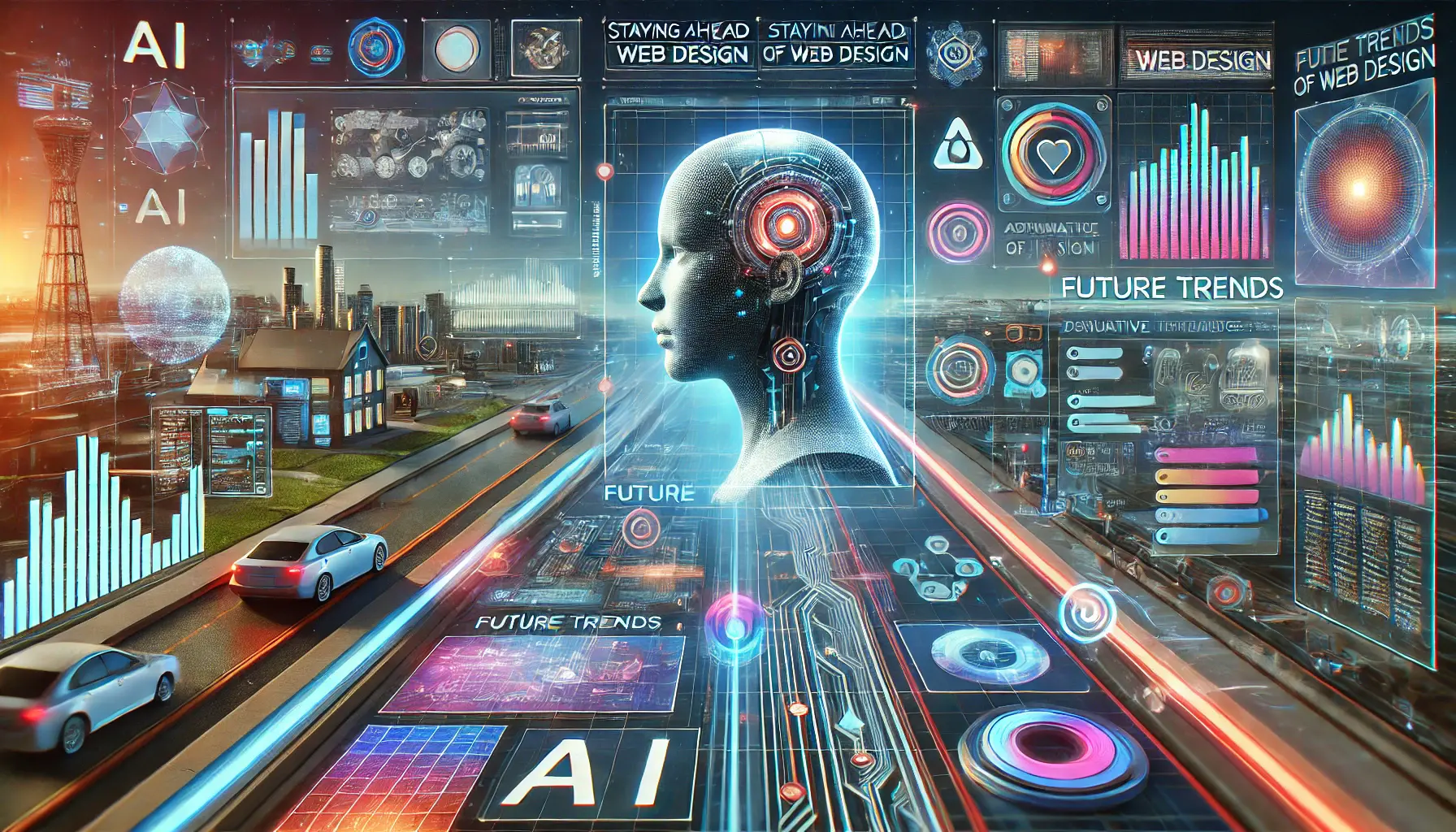
Exploring future trends in web design driven by AI innovation.
Web Design Future Trends: AI To Stay Ahead
Web design is a world that never rests, and with advancements in AI, it is becoming essential to keep up with what’s happening.
By staying informed about these trends, designers can be knowledgeable and on-trend, providing more successful websites that are perfect for the users of tomorrow.
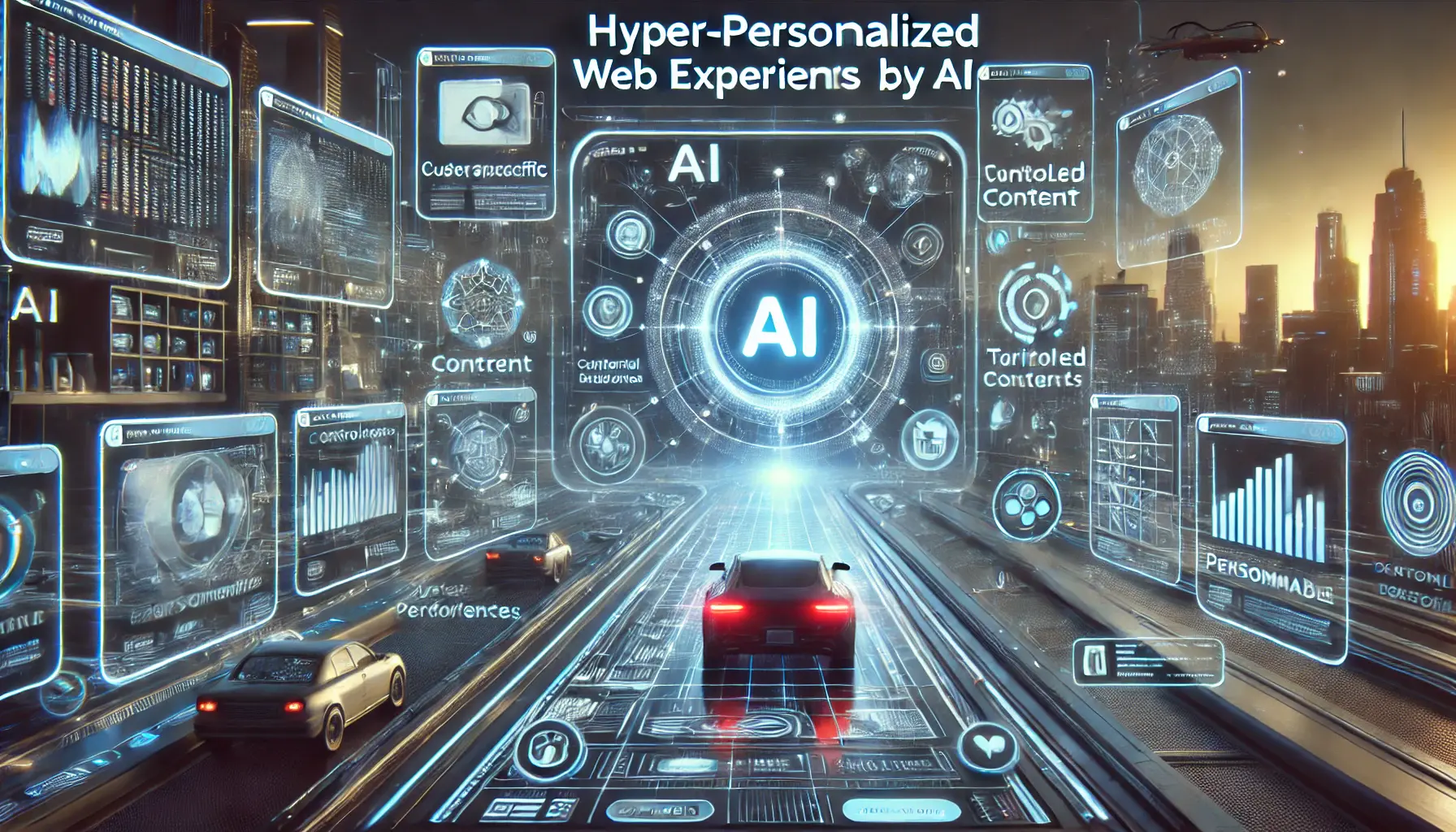
AI creating hyper-personalized web experiences tailored to individual users.
Web Experiences Are Going More Hyper-Personalized
Hyper-Personalization is the most significant trend in AI and web design.
As AI tools advance, they become more capable of analyzing vast amounts of user data to develop ultra-personalized web experiences.
This goes beyond mere customization—every aspect of the website design and content is tailored to each user’s unique tastes or requirements.
For instance, AI algorithms can modify content, product recommendations, and even website layout based on a user’s previous activities.
This level of personalization enhances the user experience, making websites more efficient and engaging, which in turn increases the time users spend on these sites and their overall satisfaction.
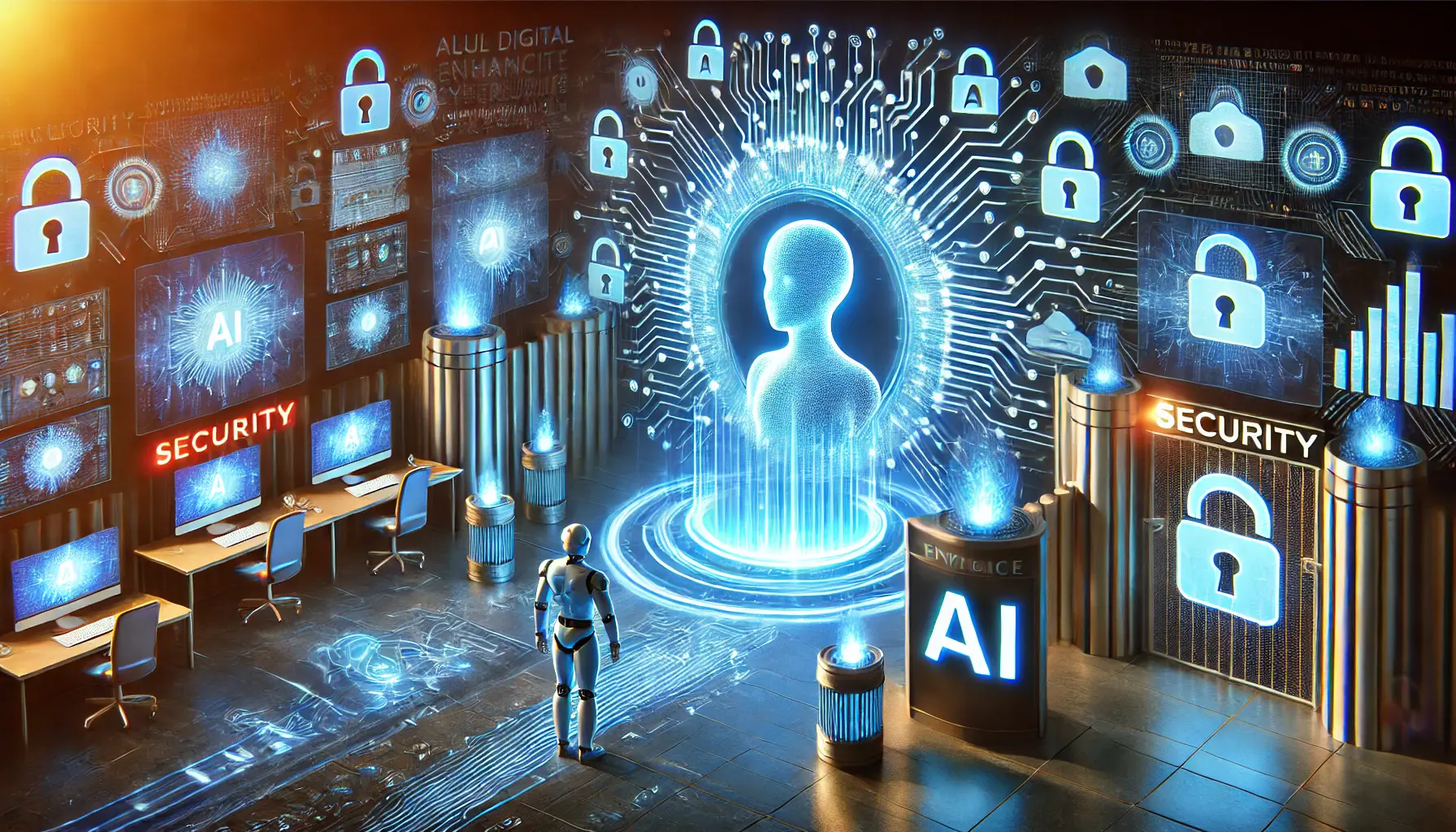
AI enhancing cybersecurity to safeguard valuable web assets.
AI & Cybersecurity: Safeguard Your Web Assets
As AI continues to evolve in web design, its role in cybersecurity becomes increasingly important.
AI-powered security tools can detect and counter attacks in real-time, keeping sites secure from potential threats.
This is especially critical in an era of rapidly advancing cyber threats.
AI can analyze traffic patterns, detect abnormalities in behavior, and automatically implement security countermeasures.
This proactive approach ensures that the website is safe while building trust with end users, who are becoming increasingly aware of online security.
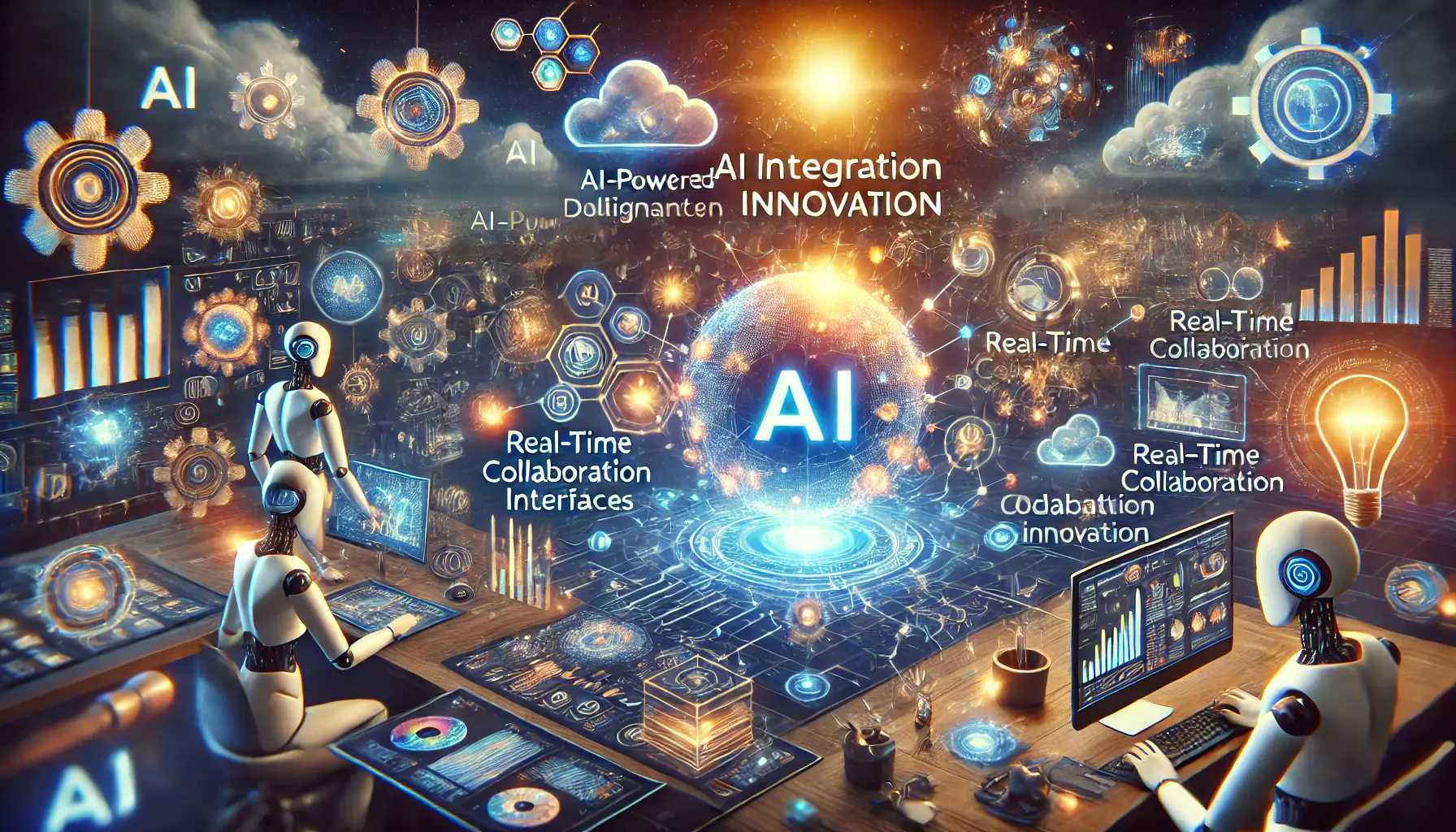
AI-driven innovation transforming design workflows.
Integrating AI into Design Workflows: AI-Based Innovation
The use of AI and related tools is pushing the boundaries of what is creatively achievable in web design.
Innovation through AI-equipped tools is becoming more common, enabling designers to streamline processes or even fully automate them.
As a result, the final design may deviate significantly from the initial concept, showcasing AI’s creative potential.
Designers are less constrained and freer to develop new solutions, contributing more and evolving their content with AI-based assistance.
Integrating AI into workflows is a fresh approach that simplifies and accelerates the design process, enabling faster executions from ideation to market launch.
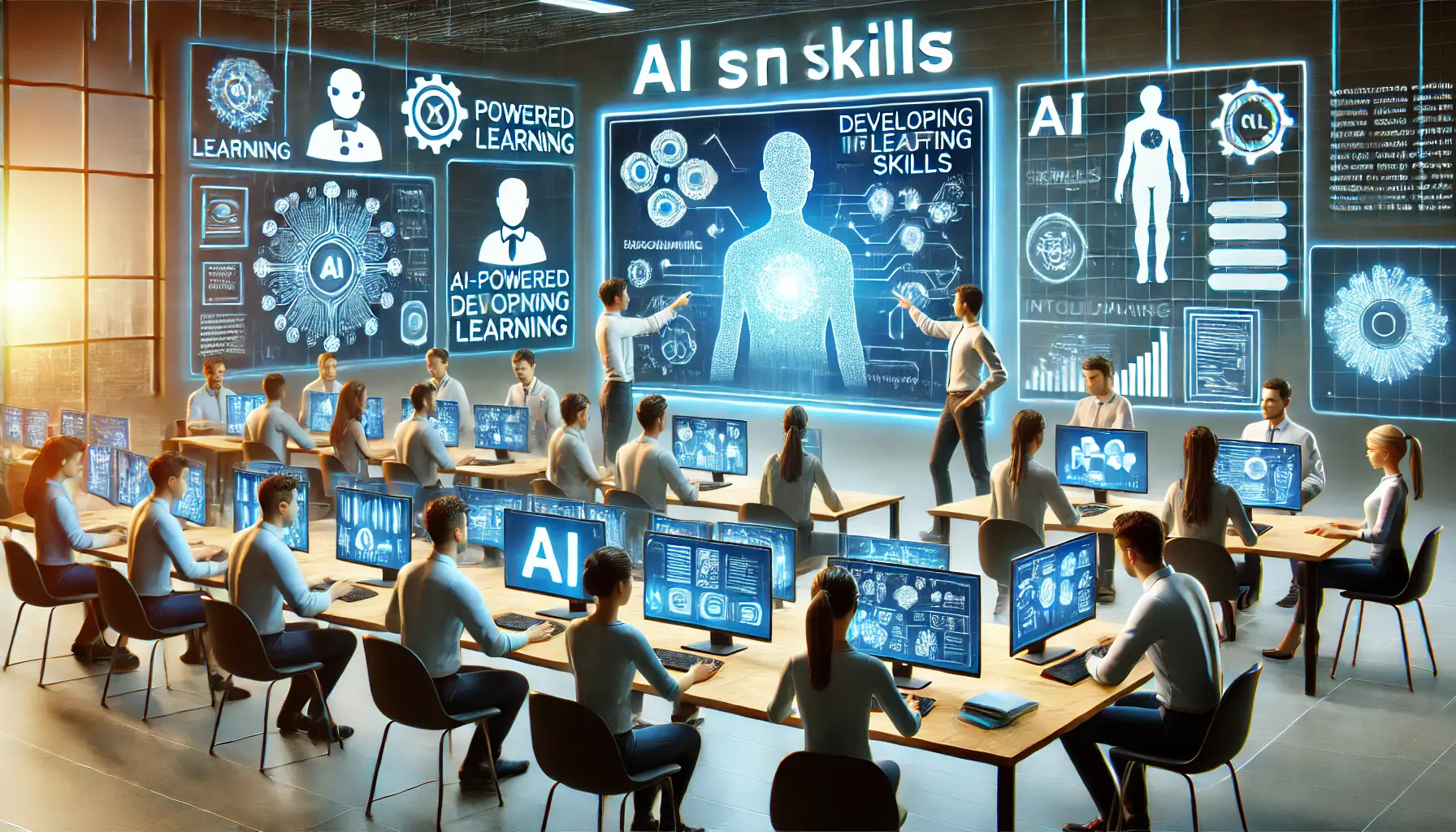
Empowering your team with AI skills through modern training and development.
Training and Development: Building Your Team’s AI Skills
The adoption of new technological trends and continuous training provide the fuel for innovation and ensure business development.
AI is an essential element of web design skills and must be accounted for in your team’s development roadmap.
As design tools and techniques become more optimized through AI, it’s crucial to ensure that your team is properly prepared.
They should be well-versed in the application of AI tools and stay up-to-date with recent and upcoming trends in AI and machine learning.
Continuous, effective training and education are the most surefire ways to keep your team competitive in their field.
By staying informed about AI trends, designers can be knowledgeable and on-trend, providing more successful websites that are perfect for the users of tomorrow.
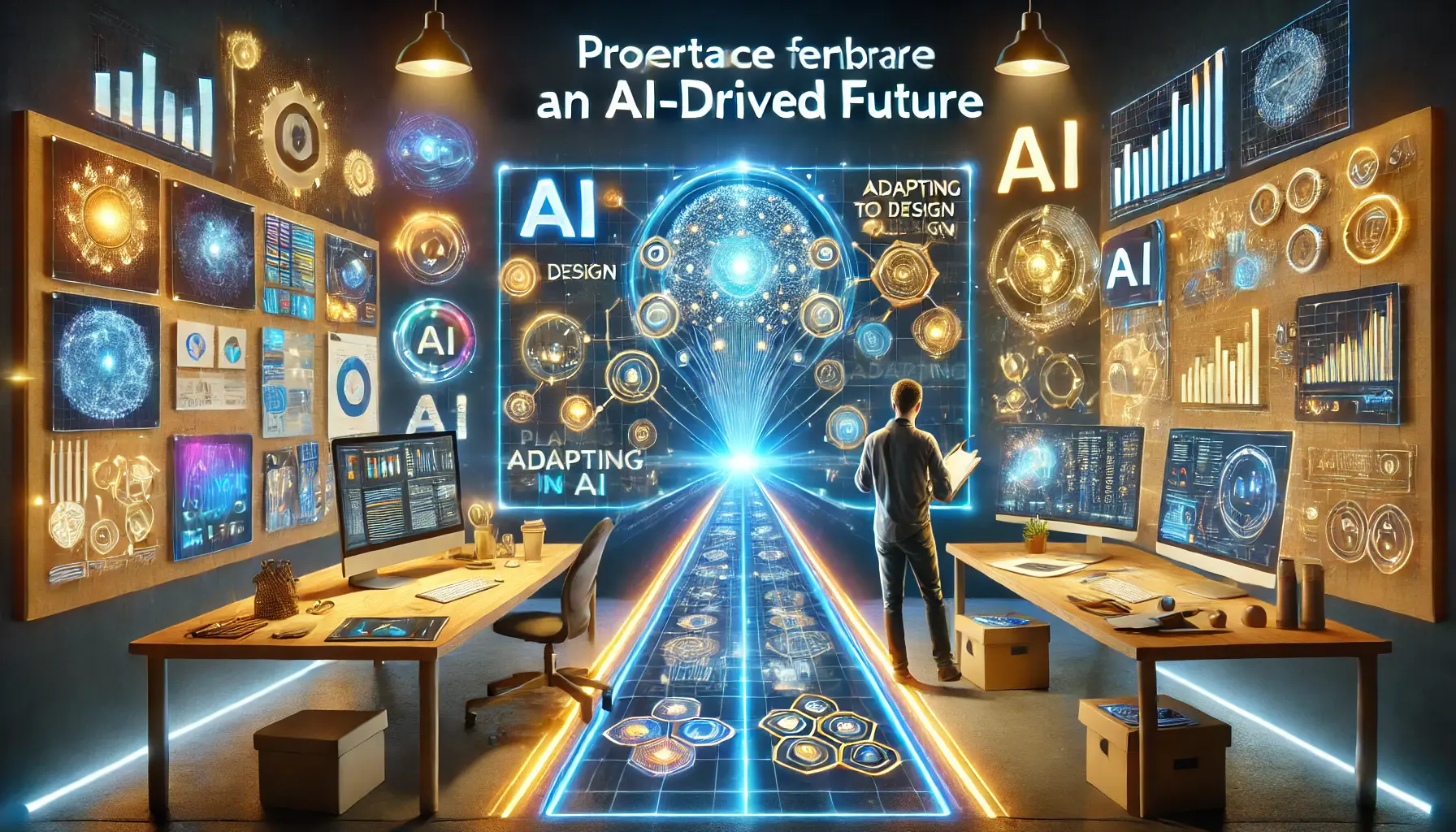
Preparing for an AI-driven future in web design to stay ahead.
Conclusion: Why All Web Designers Need to Prepare for an AI-Driven Future
Artificial Intelligence is a game-changer for web design that will transform the way sites are conceptualized, created, and enhanced.
As AI strengthens user experience through hyper-personalization and safeguards web assets with AI-driven cybersecurity measures, the digital landscape is rapidly evolving.
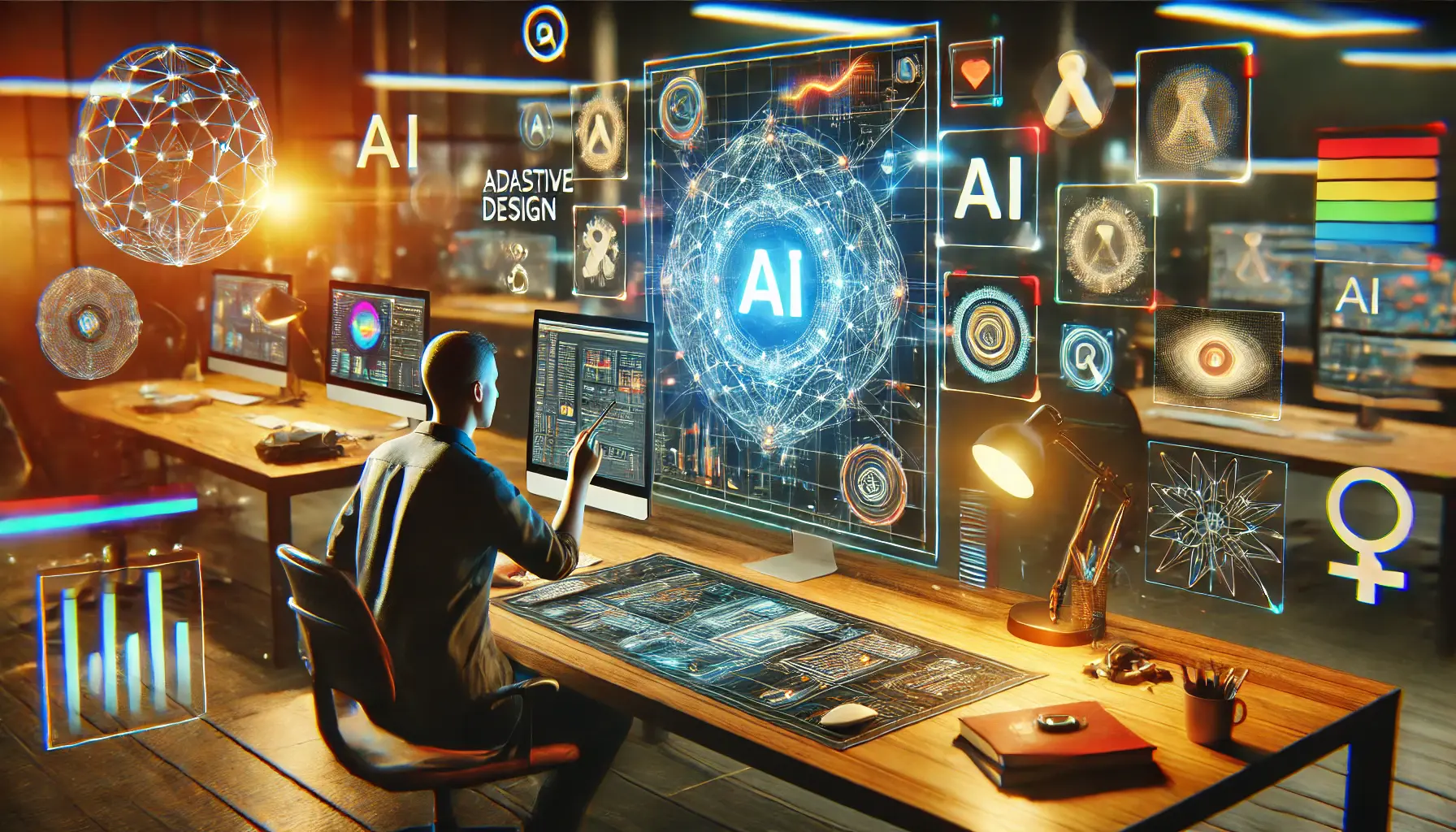
Human creativity enhanced by AI-powered tools in modern design.
Designing with AI-Powered Tools
AI provides a vast array of resources and approaches, and we have explored many of them in this post to help you develop responsive, productive, efficient, and user-friendly websites.
With AI design assistants, low-code platforms, and advanced analytics, you can push the boundaries of design possibilities, ensuring your designs are not only visually appealing but also highly functional and user-centric.
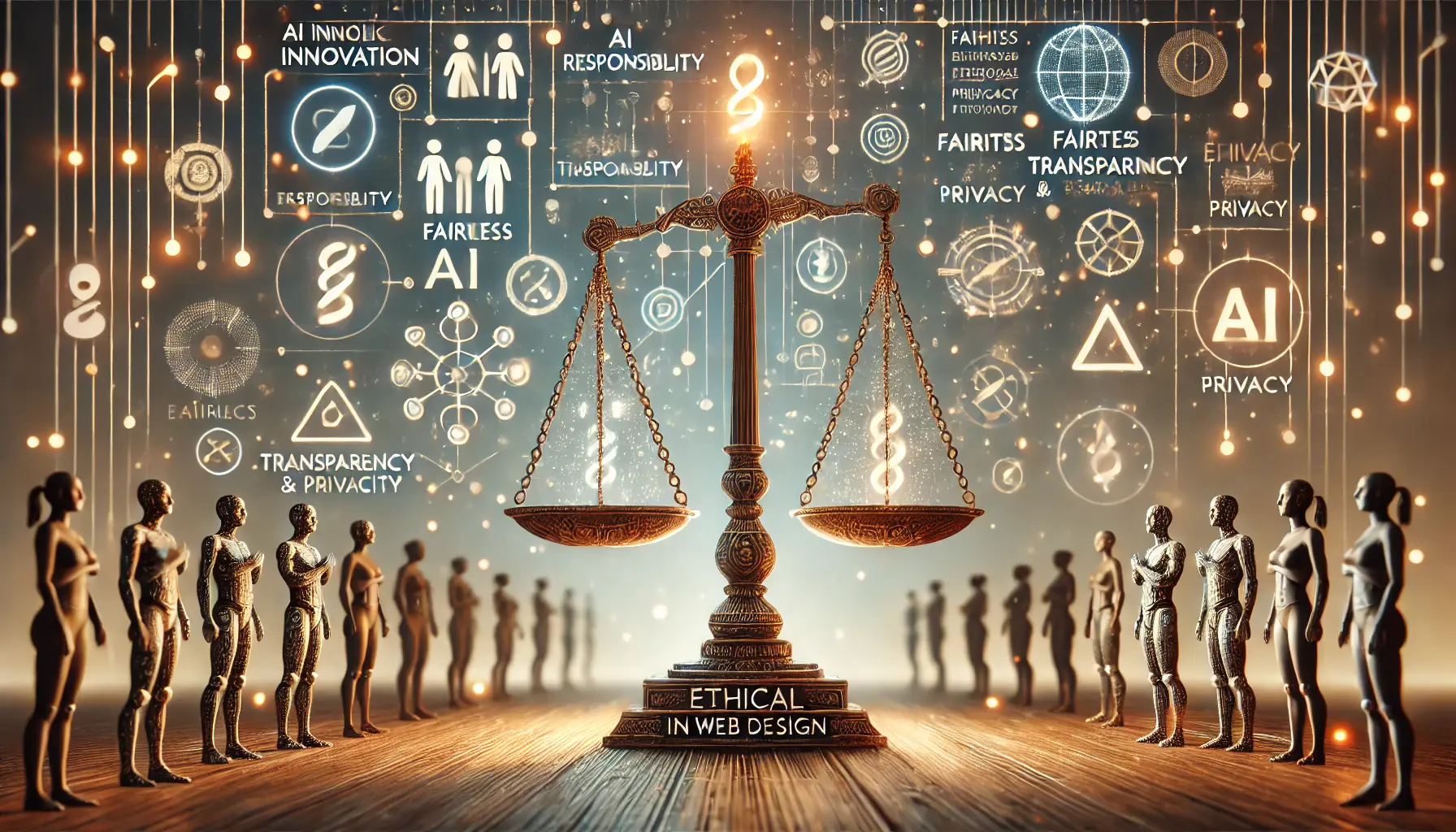
Balancing AI innovation with ethical responsibility in web design.
The Importance of Ethical AI in Web Design
Nevertheless, integrating AI into the design process comes with its own set of challenges, particularly related to design ethics, such as bias and accessibility.
It is the responsibility of designers to be cautious and diligent in their use of AI.
Striking the appropriate balance between AI’s efficiency and human creativity is crucial—AI should serve as a complement to the digital designer’s toolkit, not a substitute for it.
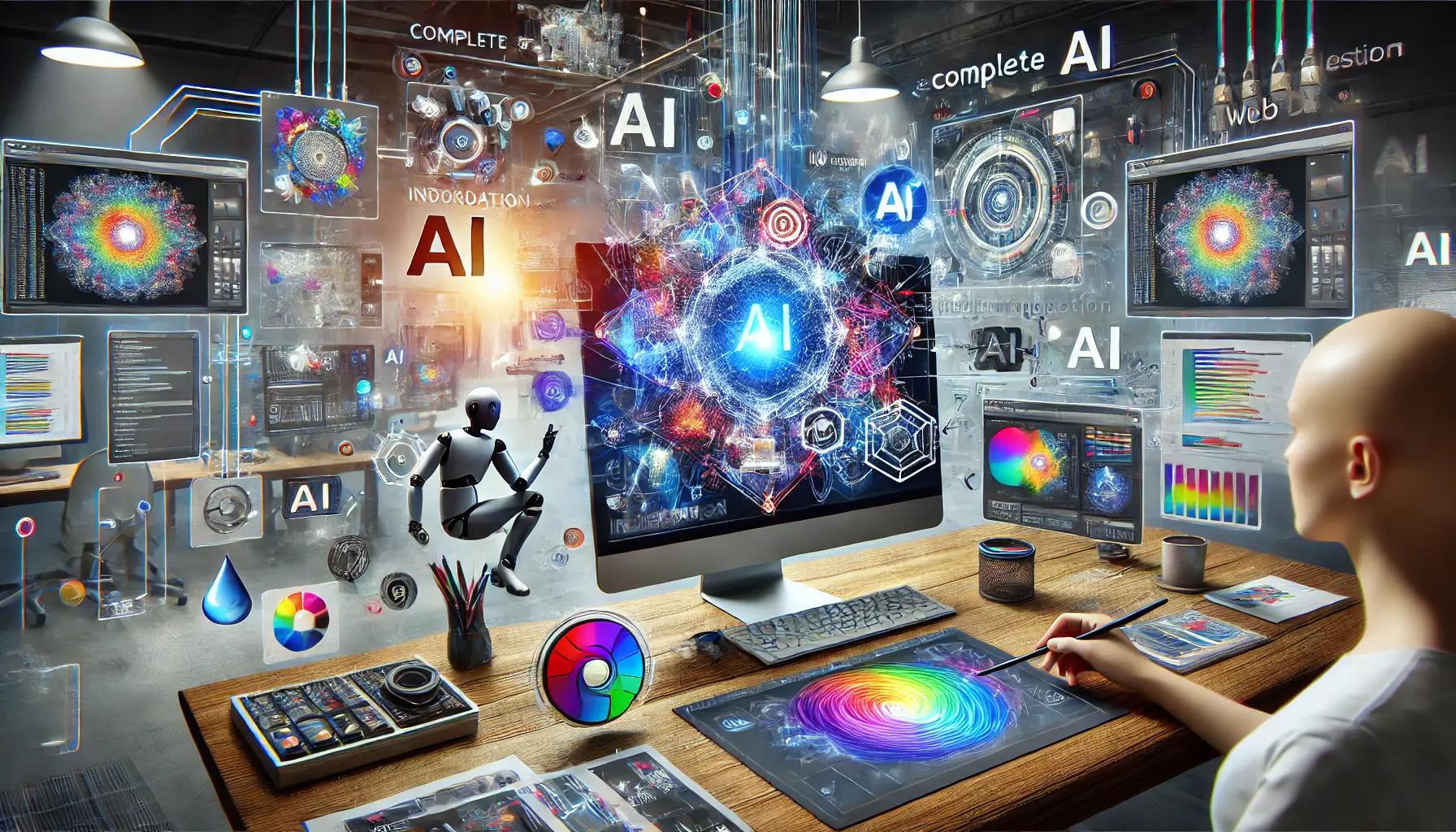
AI fully integrated into the web design process, enhancing creativity and productivity.
Complete Integration of AI in Web Design
The future of web design is centered around AI, and those who recognize this will thrive.
By staying informed with AI trends and continuously developing their skills, designers can ensure they remain competitive.
AI should be viewed as an enhancer of the creative process, rather than a replacement for human ingenuity.
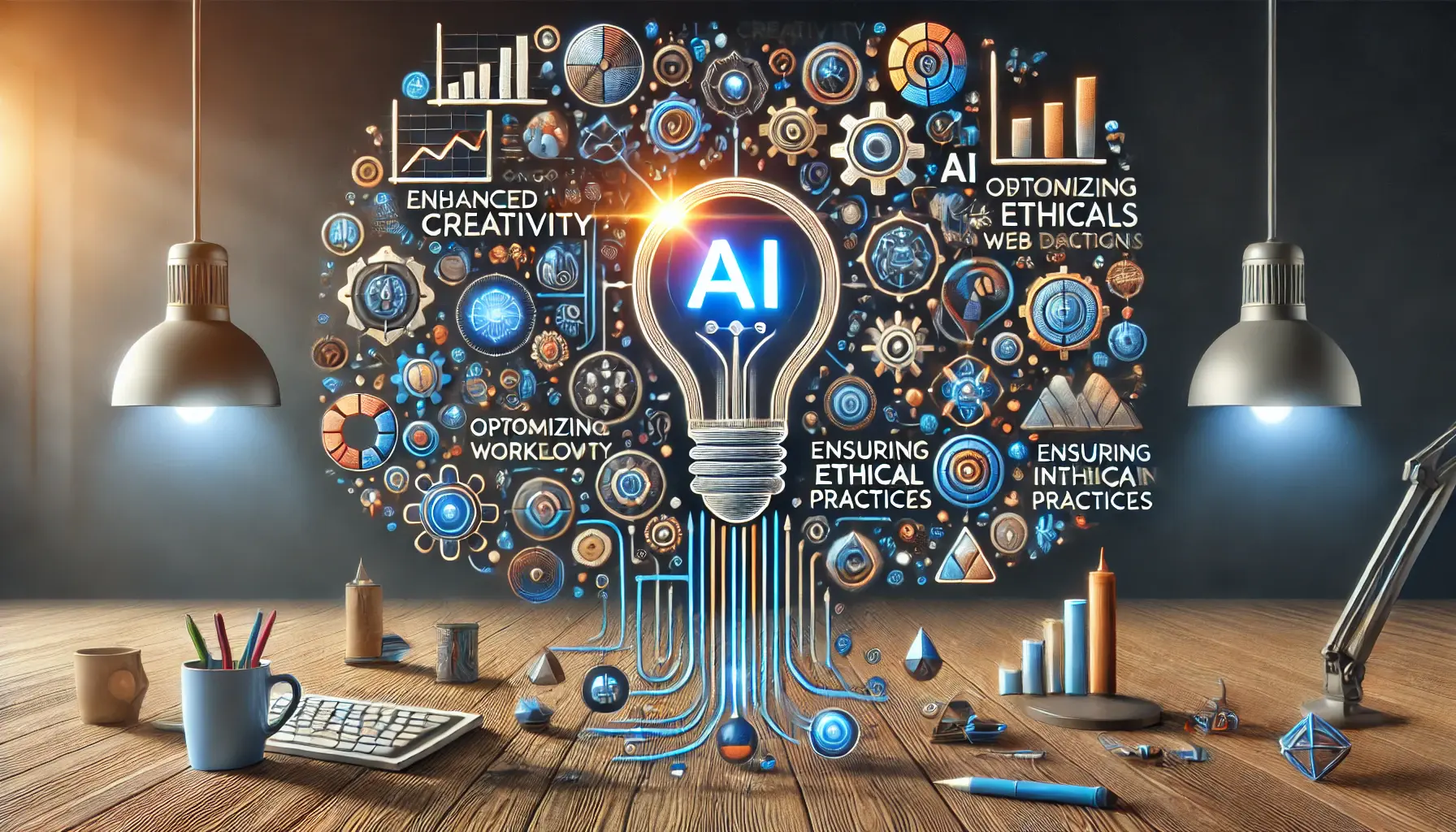
Essential concepts for successful AI-driven web design.
Key Takeaways for AI-Driven Web Design
- AI empowers designers to create highly customized, efficient, and secure websites.
- Designers must prioritize ethical considerations, such as fairness and accessibility, when using AI.
- Continuous learning is essential to staying competitive in an AI-first industry.
By integrating AI into all areas of web design—from conception to implementation—designers can ensure they lead the industry rather than merely keeping pace.
The future of web design is now, and it is driven by AI.
Artificial Intelligence is a game-changer for web design that will transform the way sites are conceptualized, created, and enhanced. By staying informed with AI trends and continuously developing their skills, designers can ensure they remain competitive.
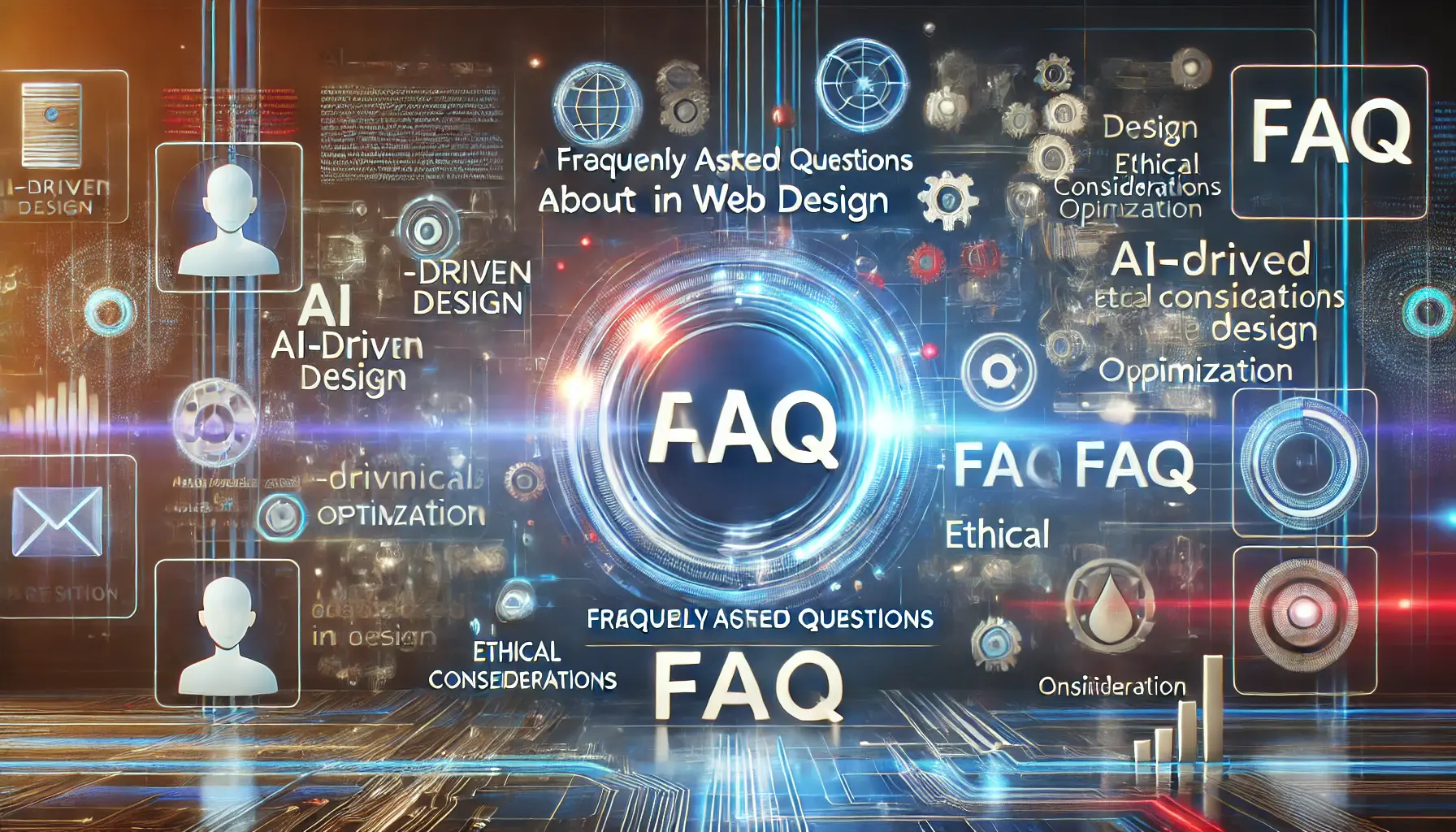
A summary of frequently asked questions about AI in web design.
Quality web design is key for a great website! Check out our service page to partner with an expert web design agency.
Web Design AI FAQ Summary
As the future of web design becomes increasingly reliant on Artificial Intelligence, many designers are left with questions regarding the implementation of such systems in their work.
The following FAQ addresses some of the most pressing questions about AI in web design, offering concise answers to help better understand and navigate this complex landscape.
AI makes the web design process more efficient by automating routine tasks, optimizing content layouts, and analyzing data in real-time.
As a result, it leaves more room for designers to focus on creativity and innovation.
AI does not replace human creativity but complements it.
Although AI can suggest design elements and handle data-intensive tasks, human creativity is still essential for introducing novel and original designs.
The main ethical considerations include potential biases in AI-generated content, lack of accessibility, and privacy concerns.
Designers must address these issues to create fair, inclusive, and transparent designs.
AI assists with personalizing a user’s web experience by analyzing their behavior and tailoring content, product recommendations, and interface layouts to make interactions with the site more comfortable and engaging.

